2023 Schedule
Unlocking the Potential of Predictive Maintenance for Achieving Net-Zero Emission Goals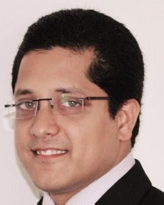 Presenter: Sunil Vedula
CEO and Founder, Nanoprecise Sci Corp
Description:
The presentation will provide a comprehensive analysis of the transformative role of predictive maintenance in achieving net-zero emission goals. The insightful session will delve into the effective utilization of machine learning, advanced analytics, and IoT technologies within a predictive maintenance system, for improving the overall efficiency of their equipment sets and reducing their carbon footprint. Attendees will gain valuable insights into how this approach optimizes energy consumption of equipment sets, minimizes downtime, and enhances overall machine performance. Join us to discover the untapped potential of this innovative approach and learn how it can drive sustainable practices, propelling organizations towards a net-zero future. About the Presenter:
Sunil Vedula is a professional engineer from Canada with 12 years of experience in the oil & gas sector. He is an expert in machine design, material science, finite element modelling, and data analytics. He obtained his B.Sc. in Mechanical Engineering from DCE and an MBA from the University of Alberta, Canada. He is an avid reader and extremely passionate about technology commercialization in the field of IIoT, AI, and Industry 4.0 so as to improve efficiency and reduce carbon emissions as much as possible. He won awards at MIT, and recently won start-up awards at the prestigious Society of Petroleum Engineers Startup pitch competition. At Nanoprecise, he is enabling affordable and accurate automated predictive maintenance for every rotary machine, be it in any industry. In this pursuit, his team created a complete end-to-end patent-pending solution that comprises smart hardware and AI-based software, and combines physics, material science, and data analytics to diagnose issues with machinery and predict the “Remaining Time to Failure.” |
Municipal Geoportal: A Tool To Strengthen Asset Management Capabilities of New Brunswick Municipalities (French)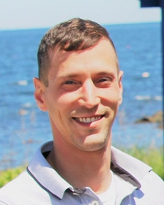 Presenter: Marcel Vienneau
Coordonnateur - Gestion des actifs, Association francophone des municipalités du Nouveau-Brunswick
Description:
Géoportail municipal : Un outil pour renforcer les capacités de gestion des actifs des municipalités néo-brunswickoises
En partenariat avec la Commission de services régionaux Nord-Ouest et financé par le Programme de gestion des actifs municipaux (PGAM) de la Fédération Canadienne des Municipalités (FCM), l'Association Francophone des Municipalités du NB facilite l'utilisation d'un outil géomatique développé localement qui servira à centraliser les données techniques sur les infrastructures, en plus d'assurer la mise à jour continue des modifications, des interventions sur le réseaux et les coûts associés à ces activités.
La présentation portera sur les paramètres du projet (durée, participants, objectifs de formation, produits de connaissance) suivie d'une démonstration en direct de l'outil avec des données réelles des municipalités qui ont participé au projet pilote.
Nous discuterons également de l'importance de cet outil dans le contexte de la réforme municipale et des futures possibilités d'intégration en matière de considérations climatiques et de collaboration régionale.
In partnership with the Northwest Regional Service Commission and funded by the Municipal Asset Management Program (MAMP) of the Federation of Canadian Municipalities (FCM), the Francophone Association of New Brunswick Municipalities facilitates the use of a locally developed geospatial tool that will centralize technical data on infrastructure, as well as ensure continuous updating of modifications, interventions on networks, and associated costs. The presentation will cover project parameters (duration, participants, training objectives, knowledge products), followed by a live demonstration of the tool using real data from municipalities that participated in the pilot project. We will also discuss the importance of this tool in the context of municipal reform and future possibilities for integration regarding climate considerations and regional collaboration. About the Presenter:
Originally from the Acadian Peninsula in New Brunswick, Marcel has been employed by the AFMNB since June 2009 and currently holds the position of Asset Management Coordinator since 2019. He has a background in accounting from the University of Moncton and has experience in taxation and auditing. In his role at the AFMNB, Marcel assists municipalities in developing initiatives related to best practices in asset management. Whether it's the development of policies and procedures, tailored training programs, or direct technical assistance, Marcel supports municipalities in achieving their goals. Originaire de la Péninsule Acadienne au Nouveau-Brunswick, Marcel est à l’emploi de l’AFMNB depuis juin 2009 et occupe présentement le poste de coordonnateur en gestion des actifs depuis 2019. Il détient une formation en comptabilité de l’Université de Moncton et possède de l’expérience en fiscalité et vérification. |
How can AI –Artificial Intelligence- Transform Maintenance?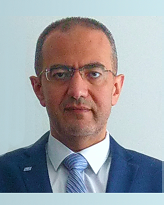 Presenter: Ahmed Rezika
Coach - Trainer, SimpleWays OÜ
Description:
An Intelligent machine can sense its environment, take a decision and apply an action or give a recommendation. How this can transform maintenance?
With every Industrial Revolution, Maintenance tools and strategies grow to provide the needed service for this industrial era. Now what shall we do with the Augmented reality and other technologies that Industry 4.0 introduces in the production environment??!
It is important to understand what AI -Artificial Intelligence in details is because it is currently part of our work and life even if we do not realize this. When we understand how AI works, we can use it as our ally. Otherwise, we shall resist its existence specially when it starts to give recommendations and report of what went good and what went bad.
AI is a title frequently applied to the project of developing systems with the intellectual similar to those of humans, such as the ability to reason, discover meaning, generalize, or learn from past experience. The human maintenance team applies its intellectual process at every situation it encounters. This intellectual process includes the ability to reason, discover meaning, generalize, or learn from experience. How AI does this? It is all based on software and Algorithms. There are two (2) ways for the software to yield intelligent advices or actions. You either add to it all the possible solutions of a problem and the software searches through all possibilities to find a one matching to this situation, then returns the stored actions for this possibility. Alternatively, the other way is to let the algorithms of the intelligent software infer some reasoning based on the inputs then solve the problem. . Let us relate this to maintenance.
About the Presenter:
Recently, I had established SimpleWays OÜ to fulfill my vision of supporting maintenance teams and maintenance managers to transform maintenance business unit to an added-value to the organization. At SimpleWays we provide consultancy and training for individuals and groups to transcend the maintenance perception. I had reached this step on my journey in maintenance after almost 25 years of hands-on experience in projects and maintenance setup and management. |
How Asset Management Can Impact Employees Mental Health Presenter: Blair Carmichael
Business Case Specialist, Ontario Northland Transportation Commission (ONTC)
Description:
During the pandemic, mental health became a topic of conversation more than ever. The actions taken by our employers can have a direct impact on our mental health. Asset management (AM) is growing in impact, but are the two connected? The session will review how good AM can improve mental health and how bad processes can damage employees’ mental health. About the Presenter:
Blair Carmichael (they/them) grew up in North Bay, Ont., the Gateway to the North. Carmichael has their B.Comm. and BBA from Nipissing University and their MBA from the Australian Institute of Business, and is completing their education for PEMAC’s CAMP. They are currently working as an Asset Management Specialist at Ontario Northland Transportation Commission on the program team to implement a new asset management transformation. Carmichael identifies as non-binary and is a strong believer in making the world more inclusive. |
Asset Management in The Circular Economy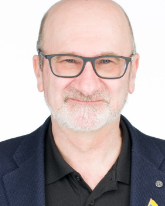 Presenter: Neil Abercrombie
Technical Director, Municipal Water, Veolia North America
Description:
The traditional economy is linear. Raw materials are extracted from the natural world, processed into commodities, transformed into manufactured goods which are consumed and eventually discarded into the environment. This is also known as “Take-Make-Waste”. There has been some evolution of this economic model over the last three decades to capture and recycle some of the waste, known as the “re-cycle economy”. Broad acceptance of an environmental crisis as a result of man-made climate change and buildup of waste in the environment is providing a catalyst to transition to an economic model where where resources are kept within the human ecosystem, everything is reused and minimal virgin material extracted from the natural environment, this is called the “circular economy”.
Asset Management practices were developed within the context of the linear (Take-Make-Waste) economy and have evolved with the recycle economy. A strength of asset management is that it breaks silos; crosses organisational and functional boundaries and helps to coordinate resources towards common goals. This paper examines case studies from the emerging circular economy to identify asset management challenges within that way of doing business. Asset management practices which could strengthen the circular business model will be considered as well as where asset management thinking and practices may have to develop.
Case studies examined include: lighting provided as a service, an alternative to managing lighting maintenance in commercial spaces; recovery of exotic metals and other materials from depleted electric vehicle (EV) batteries; and sulfuric acid regeneration from the petrochemical industry. In the circular economy, Asset Managers will need to widen their view of what is considered as an asset, and the asset management community must reach out and strengthen connections with environmental and supply chain professionals. About the Presenter:
I trained as an engineer in the 1980’s in the British Merchant Navy. I later studied Mechanical Engineering at the University of Glasgow (Scotland) and switched industries to work for Thames Water, the UKs’ largest water company, through their graduate program. This turned out to be an excellent foundation in Asset Management as they put me to work in every department of the water utility and I experienced every part of the asset management landscape. At that time Thames Water were beginning to explore the benefits of an Asset Management approach as a way to challenge the organisational silos within the company. Since then, I have developed my career in the water industry working on four continents and within multiple cultures. I have worked in many parts of the Asset management Landscape including: Operations; Maintenance; Program Management; Project Management; Commissioning; Procurement; and Operational Readiness. Reliability is baked into facilities during design and I have worked on many major wastewater upgrade projects where I brought operations and maintenance knowledge to the design phase. Besides my undergraduate Bachelor's degree in Mechanical Engineering, I have a Master of Science in Environmental Decision Making and I am a Certified Asset Management Professional through PEMAC. I am a PEng. with Engineers, Geoscientists Manitoba and a Fellow of the Institution of Mechanical Engineers in the UK. |
Asset Management and Bidirectional Electric Vehicles BEVs Infrastructure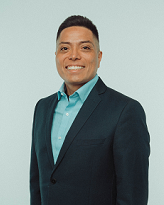 Presenter: Carlos Osterroth
Assistant Director Facilities, Department of National Defence
Description:
Bidirectional chargers allow users to store cost-effective off-peak or solar-generated electricity in a vehicle battery and then export it to the grid or directly into a home during the hours when electricity costs the most. Bidirectional electric vehicles (BEVs) charging is exactly what it sounds like: EV charging that goes two ways. Whilst with unidirectional (one-way) EV chargers, electricity flows from the electric grid into the EV; with bidirectional (two-way) EV chargers, electricity can flow both ways. By 2035, all new cars and light-duty trucks sold in Canada are planned to be zero-emission vehicles. And, on a local level, communities are committing to reduce emissions and prioritize sustainable transportation. BEVs employed as mobile battery storage can add resilience benefits and demand-response capabilities to a home or site’s building infrastructure. A BEV can receive energy (charge) from EV supply equipment (EVSE) and provide energy to an external load (discharge) when it is paired with a similarly capable EVSE. Bidirectional vehicles can provide backup power to homes, buildings, or specific loads—sometimes as part of a microgrid—through vehicle to home (V2H) or vehicle to building (V2B) charging or provide power to the grid through vehicle to grid (V2G) charging. V2H, V2B, and V2G power solutions can complement solar photovoltaic (PV) arrays and other distributed energy resources (DERs), or supplement diesel generators as backup power for operational and emergency applications. About the Presenter:
Carlos Osterroth is an accomplished, passionate, result-driven strategic leader with over 20 years of experience in strategic leadership, operations management, procurement, supply chain, asset management, and engineering project management—in private industry, higher education, and federal and municipal governments. He has received government endorsement as a skilled professional in Canada, the U.S., and the U.K., providing strategic leadership and competent advice in the delivery of business goals, value, asset management, engineering, and maintenance programs for assets, developing and implementing solutions and strategies that drive growth and improvements in the organization, toward achieving long-term results and sustainable world-class operations. Carlos holds a B.Sc. in Mechanical Engineering from the National Polytechnic Institute in Mexico and an M.Sc. in Engineering Management from the University of Portsmouth, U.K. He also has an MBA from Athabasca University, Canada. |
Region of Peel – Integrating Green Infrastructure into our Corporate Asset Management Methodology Presenter: Samantha Paquette
Program Manager, Regional Municipality of Peel
Co-presenter:
Jona Mema Advisor, Corporate Asset Management Description:
In our continuous improvement journey, the Region of Peel is integrating green infrastructure into our advanced asset management (AM) practices. Natural assets are being integrated into the same corporate AM methodology as grey assets. This methodology is designed to support the executive leadership team in making long-term reinvestment decisions that ensure we continue to deliver services at levels endorsed by council. Additionally, annually updated outputs also support staff in their tactical and operational decision-making. Green infrastructure presents an opportunity for the organization to deliver services that support our vision and mission. Like grey assets, natural assets require reinvestment needs over their lifespan and are impacted by climate change. Unlike grey assets, they appreciate over time and thus present a challenge in how to integrate them into the same corporate AM methodology. This session will showcase the following: selecting a valuation method for trees and shrubs; identifying lifecycles strategies; challenges in and solutions for identifying asset levels of service; and using a corporate risk framework to quantify organizational risk in service delivery. Learning objectives for this presentation are optimizing corporate AM methodology by incorporating green infrastructure to meet organizational strategic goals and customer expectations, and valuation methodology and lifecycle modelling for trees. Topic areas for this presentation are natural assets and climate change. About the Presenter:
Samantha Paquette is a project manager for the infrastructure programming and studies team at the Region of Peel. Samantha is a landscape architect who graduated from the University of Guelph with a master’s in Landscape Architecture and a B.Sc. in Environmental Biology. She has 10 years of experience in the environmental sector with expertise in urban forestry and green infrastructure, including low-impact development. At the Region of Peel, she works closely with internal and external groups to manage the implementation of green infrastructure to ensure it is designed, constructed, and maintained appropriately. Previously, she worked at Credit Valley Conservation, where she was responsible for the development and implementation of programs and projects in integrated water management. 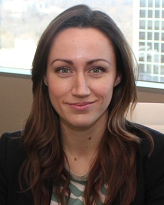 About the Co-presenter: Jona Mema is an asset management advisor in corporate asset management at the Region of Peel. Jona is responsible for developing, promoting, implementing, and updating the asset management strategy across all utility-funded infrastructure. Previously, Jona has worked in supporting municipalities prepare asset management plans to fulfil the requirements of O.Reg 588/17, as well implement asset management and budgeting software solutions.
|
Tactical Lifecycle Management - Promoting Sustainable Municipal Infrastructure and Partnerships for Reliability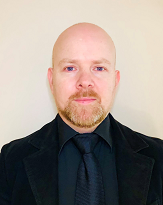 Presenter: Philip Lawlor
Manager, Treatment Plant Maintenance, Regional Municipality of Halton
Co-presenter:
Alex Pallo Project Manager - Water Services Description:
This presentation will showcase the collaborative efforts of Halton Region’s maintenance and capital teams to identify alternative strategies for maintaining physical assets beyond the typical replacement approach suggested by standard lifecycle models. In addition to the capital needs assessments and lifecycle model projections, maintenance introduced an innovative approach that combines detailed component-level condition appraisals with alternative tactical lifecycle options, including refurbishment, RCM-R, OEM-R, and “do nothing.” The session will feature worked examples to illustrate this approach. The aim of this presentation is to demonstrate how municipalities can invest in and leverage maintenance and reliability functions to reduce capital budgets while enhancing the capabilities of teams responsible for the care of physical assets in an environmentally sustainable manner. About the Presenter:
Philip Anthony Lawlor is an experienced professional in maintenance and asset management with over 23 years of experience dedicated to private and public sector industries. He holds a Master’s in Quality Management, a Post-baccalaureate Diploma in Innovation Management, and a Specialist Diploma in Lean Systems. Additionally, he is a Certified Asset Management Professional (CAMP) and Assessor (CAMA). Lawlor works full-time as the Manager of Treatment Plant Maintenance at Halton Region, where he is part of a high-performing team responsible for the smooth operation and effective maintenance of water and wastewater treatment plant assets. With his leadership experience as Director of Maintenance and Reliability, Maintenance Management, and other leadership positions, Lawlor brings a wealth of knowledge from a diverse array of industrial sectors across Europe and Canada, providing him with a comprehensive while practical understanding of maintenance, reliability, and asset management principles. Lawlor’s contributions in the field have earned him recognition from organizations like Engineers Ireland, MEETA, PEMAC Asset Management Association Canada, and others. His work has been acknowledged through awards and publications, which reflect his commitment to sharing best practices and acknowledging the collective efforts of teams. 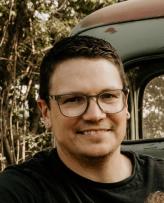 About the Co-presenter: With a career spanning over 12 years, Kevin Smith is a seasoned maintenance professional who excels in executing Maintenance Management best practices. Currently serving as a treatment plant maintenance team supervisor in the Halton Region, Kevin plays a pivotal role in optimizing tactical lifecycle management (TLM), change management (F3R), and maintainability risk treatment programs.
Kevin has led the successful execution of these programs, resulting in remarkable opportunities and tangible improvements. Notably, Through the TLM process, for assets selected for replacement, the team involved reduced estimated replacement budgets by more than $15 million.
His strategic acumen is evident in his adept coordination of reliability, maintainability, and risk treatment execution. Highlighting his commitment to professional growth, Kevin holds a Millwright certification and is in the process of obtaining a Maintenance Management Professional (MMP) designation, underscoring his dedication to staying updated with industry trends. His journey remains a testament to his practical expertise, leadership, and unwavering dedication to enhancing tactical lifecycle management in the maintenance sector.
|
Keynote Presenter: Cheif Gordon BlueSky
Chief and Treaty One Chairperson, Brokenhead Ojibway Nation
Description:
. About the Presenter:
Chief Gordon BlueSky was elected to serve his home community of Brokenhead Ojibway Nation (BON) in 2022. Chief BlueSky is a highly motivated, results-based professional and leader with tremendous experience in lands governance, resource management, and negotiations. He was recognized by the National Aboriginal Lands Managers Association in 2016 for excellence in Lands Management that has contributed and influenced the field of land management beyond their community. BlueSky received an Honourable Mention for the Manitoba Excellence in Sustainability Award for being a catalyst in bringing First Nations together in the creation of the Lake Winnipeg Indigenous Collective in 2015. Prior to his election, Chief BlueSky worked as the Director of Lands for the Treaty One Development Corporation (T1DC). This was a very fitting role for BlueSky due to his involvement with the Kapyong Barracks land claim during the early years of its initiation by BON in the early 2000s. During his time at Treaty One, Bluesky successfully led negotiations to finalize the “Gaawijijigemangit Agreement”, the Municipal Development Services Agreement with the City of Winnipeg which secures the provision of basic infrastructural services for the Naawi-Oodena Treaty One Joint Reserve. Prior to his time with T1DC, BlueSky had 18 years of experience working with BON, Fox Lake Cree Nation, and the Treaty Land Entitlement Committee of Manitoba. In these roles he championed the work on important land claims—with a primary focus on reserve creation—as well as land, environment, and resource protection. Chief BlueSky is also a strong advocate for reform to child welfare and educational systems, having lived experience in Canada’s colonial history as a survivor of the 60s Scoop who eventually returned home from the United States to rediscover his heritage and become the leader he is today. |
Beyond Predictive Maintenance: Accelerating the Path to Net Zero Presenter: Sunil Vedula
CEO and Founder, Nanoprecise Sci Corp
Description:
The presentation will explore the critical role of predictive maintenance in achieving net-zero emissions. Traditional maintenance practices are not sufficient to meet the growing demand for decarbonization, which has only emphasized the need for an innovative, data-driven approach to maintenance. The discussion will highlight the pressing demand for an innovative, data-driven approach to maintenance, underscored by a comprehensive framework that integrates cutting-edge machine learning and AI techniques. The framework aims to optimize maintenance activities and reduce carbon emissions, bringing about numerous benefits such as reduced downtime and carbon footprint, as well as enhanced efficiency and cost savings. Real-world examples of successful implementation within various industries will be showcased, serving to illustrate the efficacy of this approach. The presentation will culminate with an emphasis on the importance of collaboration among industry players in accelerating the transition to a net-zero emissions future. About the Presenter:
Sunil Vedula is a professional engineer from Canada with 12 years of experience in the oil & gas sector. He is an expert in machine design, material science, finite element modelling, and data analytics. He obtained his B.Sc. in Mechanical Engineering from DCE and an MBA from the University of Alberta, Canada. He is an avid reader and extremely passionate about technology commercialization in the field of IIoT, AI, and Industry 4.0 so as to improve efficiency and reduce carbon emissions as much as possible. He won awards at MIT, and recently won start-up awards at the prestigious Society of Petroleum Engineers Startup pitch competition. At Nanoprecise, he is enabling affordable and accurate automated predictive maintenance for every rotary machine, be it in any industry. In this pursuit, his team created a complete end-to-end patent-pending solution that comprises smart hardware and AI-based software, and combines physics, material science, and data analytics to diagnose issues with machinery and predict the “Remaining Time to Failure.” |
Problem-Solving & Decision-Making in Asset Management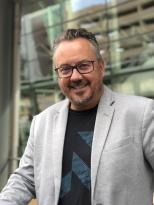 Presenter: Paul Daoust
Founder, Managing Director, Scio Asset Management Inc.
Description:
The key to operational excellence is more, better decisions. We all think we’re good problem-solvers, but truthfully, most of us are just solutioners. Decisions are the solutions to important problems. How do we find our important problems? What are the impactful decisions in asset management? And how should they best be made at each opportunity? This workshop will explore a mechanistic and practical approach to problem-solving and decision-making guaranteed to supercharge your organization’s leadership and practitioner capabilities to make quality decisions that best direct your vast and scarce resources toward earning maximum value from your people, practices, and technology through your assets. About the Presenter:
Paul Daoust has almost 30 years of experience in asset management and operational excellence in the energy sector. As the founder of Scio Asset Management, Daoust is declaring war on mediocrity and empowering progressive operational leaders to make better decisions to stop value leakage in their organizations through learning, coaching, advising services, and technology solutions. As founder of TheAsseteers.org, a learning and sharing community, Daoust is a leading international advocate for asset management professionals and industrial and infrastructure asset-owning organizations. |
New Paradigm in Root Cause Failure Analysis for Asset Intensive Industries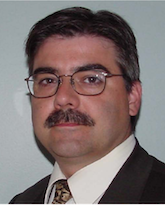 Presenter: Ron Doucet
Principal, RYKE Reliability Inc.
Description:
Most failures in asset-intensive industries are very specific to the operating context. An effective root cause and failure analysis (RCFA) process cannot be based on templates of cause categories and it must be able to adapt to the specifics of the industry and events. The most important goal of an RCFA process is not to identify the cause, but to prevent the recurrence of the consequence. Simply identifying the cause is less than half of the goal, which is to prevent a recurrence. Although some RCFA processes can adequately identify the causes of the failure, none or almost none have the ability to formally identify the potential cause, and almost none have a process to defensibly identify the actions to address the causes. This presentation establishes new paradigms for the management of failures and will introduce the following: a simple, yet elegant RCFA process that can address and resolve all causes of failures of equipment, work processes, and management systems; an RCFA process that will identify actual and potential causes with the goal of preventing a reoccurrence of the consequence due to actual and potential causes; and an RCFA process that has a clear and defensible decision process to determine the solutions to prevent the consequence of the failures. We will also review the following: all categories of causes of failures and their solutions; reliability centred maintenance principles on which the process is based; the step-by-step process of how to analyze any equipment, work process, or management systems failure; and case studies showing how this process is defensible and enables companies to display due diligence in the prevention of failures and their consequences. About the Presenter:
Ron Doucet is a professional engineer who has been improving the performance of assets, departments, and companies for over 30 years. Doucet always had an intolerance for repetitive failures, and this was one of his primary focuses in every department he worked in or led. In industry, Doucet had the privilege of doing the analyses on how to improve performance and led the implementation and transition to a culture of reliability, in tandem with leading the day-to-day operations. This enabled him to develop real-life and proven methodologies to improve the performance of assets and road maps to improve the performance of asset-intensive businesses. Doucet had the opportunity to be trained by the late John Moubray, the globally recognized expert in RCM and the author of the book RCM II, in which he received an honourable mention based on his successes in RCM and the application of its principles. Doucet is the developer of RCM-based improvement processes, including PMO Pro®, RCS Pro®, and RCFA Pro®, and he developed the process for improving the performance of asset-intensive businesses known as The RYKE Way. In 2010, he set up RYKE Inc., a reliability solutions provider focused on improving the performance of asset-intensive businesses and providing training and mentoring in RCM and RYKE’s improvement processes. Doucet is an active instructor in PEMAC’s MMP program. |
Investing in your future with Continuing Education Presenter: Josh de Vries
Acting Dean, Business, Academics, Trades and Regional Stewardship, Northern Lakes College
Co-presenter:
Amy Saitz Dean Description:
This session will discuss how accessible and “just in time education” helps upskill working professionals. We will explore different models of continuing education and what post-secondary institutions can offer to meet both individuals and company training needs. In addition we will discuss relevant grants and funding options currently available. About the Presenter:
Monica started her education by achieving a bachelor of science in neuroscience and psychology. After moving to Alberta from Ontario she discovered her passion for education and has worked for Northern Lakes College for three years. She has worked with the CECT department for two years and believes in providing a supported model for continuing education. 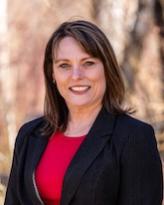 About the Co-presenter: Amy started her career in Office Administration and has a Bachelor of Education in Adult Education and a Master of Education in Distance Education. Amy has worked 25+ years in post-secondary and is a firm believer in flexible, accessible education for life-long learning as a means to enrich quality of life, build skills and expand knowledge. She has embodied this belief completing both degrees and taking several “upskilling” certificates and courses throughout her working career.
|
How Digital Twin Improves Maintenance and Reliability - An Interactive Workshop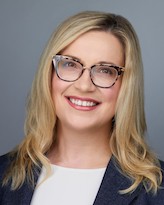 Presenter: Justyna Krzysiak
Management Systems Lead, Carbon Engineering
Co-presenter:
Kelly Kinghorn Partner, Technology Services Lead Description:
With all the hype surrounding digital twin, one might expect to see a higher rate of adoption by industry. The reality, however, is that companies are just now beginning to cautiously explore its full potential. As companies turn to laser scanning or 3D modelling to digitize their assets, they quickly realize just having a digital model is not enough. To truly unlock the value of a digital twin—driving efficiencies in maintenance and reliability—requires data and integration of the digital model with business systems. Further to this, while companies are starting to recognize the need to invest, executives remain skeptical of the economic return and feasibility of implementing an enterprise digital twin solution. In this workshop, we will take a holistic approach to exploring how people, processes, enabling technology, and data are combined to make digital twin a reality. We will address and invite discussion of the following key questions: What is a digital twin? Is a laser scan or 3D model a digital twin? How do we create and maintain a digital twin? Trusted, real-time 1D, 2D, and 3D engineering data, integrated with maintenance and operations data, is at the core of every successful digital twin implementation, so how do we address gaps and inconsistencies in our brownfield data? What are the real-life applications of digital twin in inspections, maintenance, reliability, and operations? What financial and non-financial benefits should we anticipate? This is all great…but where do we start? What are some tangible actions you and your company can do now? ReVisionz will conduct and moderate a discussion with the aim of sharing best practices so we can learn from one another and improve our understanding of the digital twin, its applications, and its advantages. About the Presenter:
Justyna Krzysiak is a professional engineer with 20 years of progressively responsible experience in people leadership and project management across refining and specialty chemicals supply chain, energy infrastructure projects, engineering information, and asset management. As a past conference chair of the Edmonton conference, and technology panel moderator in Toronto in 2022, Justyna is looking forward to, once again, connecting, learning, and contributing on two topics she is passionate about: digital adoption in traditional industries and data-informed decision-making for better risk management. About the Co-presenter: Kelly Kinghorn is a partner and director at ReVisionz Inc. With over 30 years of industry experience across multiple sectors within owner/operator and EPC organizations, Kelly has proven management consulting experience working with clients to define and deliver asset information management programs. He works with clients to define digital transformation/digital twin program vision, strategy, road map, and execution plans to support their operational excellence goals and objectives, thereby improving productivity and safety, reducing operational costs, and ensuring regulatory compliance.
|
Maintenance 4.0 - The Digital Transformation Journey to Planned Maintenance Presenter: Jean Charbonneau
President, CiM Maintenance INC
Description:
According to current maintenance maturity surveys, more than half of asset intensive companies still operate with unplanned maintenance work levels over 50%.
The objective of the workshop is to have the attendees understanding the elements required to put in place, to transition to planned maintenance and get out of the relentless reactive mode.
A transition to planned maintenance 4.0 is centered around developing the right maintenance strategy with predictive analytics 4.0 based on equipment criticality, as well as ensuring that the work required to prevent equipment failures is always performed on time, by putting in place a most efficient multi-week scheduling process with rigorous schedule compliance monitoring.
The workshop will cover how to use 4.0 Digital Technologies to ensure the PROCESS is performed flawlessly by controlling that the PEOPLE involved are playing the role that they are assigned to, in order to successfully implement the PROCESS and standardize it across the organization.
We will also present the business case of a major energy company that successfully performed the digital transformation of its maintenance work execution process and is now achieving over 85% planned work. This success is not universal. According to a recent Mc-Kinsey survey, only 4% to 11% of asset intensive companies’ digital transformation projects provide the expected benefits. Achieving the expected return of digital transformation project involves much more than just implementing Digital Technology. It absolutely requires that PEOPLE and PROCESS be at the forefront of the business transformation initiative. About the Presenter:
Jean Charbonneau has over 30 years of experience as a reliability engineer and consultant in asset performance. Twenty-five years ago, he founded the Maintenance Excellence Group, putting together a team of asset reliability experts to assist asset-intensive organizations with performing the right maintenance, at the right time, at the lowest cost. Charbonneau is a worldwide renowned speaker and an industry-leading influencer on the best strategies for asset-intensive organizations to advance to the Industry 4.0 era and maximize their asset performance and production output. |
A Practical Approach to Managing Risk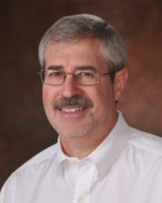 Presenter: Paul Casto
APM Industry Principal, GE Vernova
Description:
Reliability, maintenance, and asset management is about creating value to meet an organization’s targeted business outcomes. Central to success in this area is risk management. Risk must be identified, quantified, mitigated, and managed. There are international standards that offer practical guidelines for managing risk. ISO 31000 provides risk management guidelines, and ISO 31010 provides a standard on risk management techniques. These standards, along with the application of industry best practices, provide a practical framework for rigorous management of risk that practitioners can apply in the normal course of work. This session provides an overview of risk, along with practical tools and processes that you can use to manage risk. We will review tools and techniques that can be used to improve performance, encourage innovation, and create and protect value. We will also discuss the principles of risk management and the risk management process, including the following topics: risk governance, establishing the context, risk identification, categorizing risk, risk analysis techniques, risk matrix, risk evaluation, risk level, risk register, risk treatment plans, and monitoring and reviewing techniques. Class exercises will be used to make this session practical and interactive. Attendees will leave with working knowledge of how to apply the ISO 31000 risk management principles and framework, as well as the practical application of tools for asset criticality, estimating risk, and building a risk register. There are six learning objectives for this presentation: understanding Introduction to Asset Management (ISO 5500X) and Risk Management (ISO 310XX) standards; becoming familiar with risk identification and quantification techniques; learning about risk management tools and processes to improve risk management performance; appreciating risk-estimating challenges and improvement techniques; understanding risk governance, identification, triggers, categorization, and analysis; and developing criticality, risk matrices, risk register, and risk treatment plans. About the Presenter:
Paul Casto is an asset performance management industry principal at GE Digital and is a leading practitioner in asset performance management, reliability, and maintenance improvement methodologies. Paul is also the current chair for the Society of Maintenance and Reliability Professionals (SMRP). He has hands-on experience in asset management, reliability, maintenance, operations, and engineering in the chemical, oil & gas, metal, mining, and construction industries. His current areas of interest include enterprise risk management, application of maintenance best practices, advanced predictive technologies, machine learning, and reliability analytics. Paul holds multiple degrees and certifications in maintenance, reliability, and asset management. His current academic work is in enterprise risk management applied to value at Boston University. |
Moving to Predictive Reliability Presenter: Robert MacKenzie
Business Development , Cohesive
Description:
Tracing the journey from deterministic maintenance and reliability to a data centric, model based predictive reliability. |
Performance Measurement Frameworks – The Missing Link between Asset Life Cycle Management and Value Realization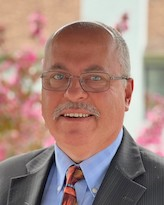 Presenter: Philip Schachtner
Partner - Enterprise Asset Management, ReVisionz
Co-presenter:
Linus Hankimattar Partner, Strategy and Consulting Description:
When prompted, most senior executives will insist that asset and process safety data is a valuable corporate asset. However, all evidence points to the contrary. Companies report and monitor many KPIs across finance and operations, yet few, if any, involve monitoring the quality of the organization’s asset and process safety information, and how it supports effective decision-making. Since many of these companies have reliability and maintenance programs that rely on exactly this data, it’s not surprising that when these programs fail, root cause analysis often reveals ineffective performance measurement due to unstable or incomplete asset data foundations. This workshop will address this common lack of metrics in asset data quality. In an interactive setting, participants will explore how most mature performance metrics focus on the work execution process, causing latent risk to go undetected because the underlying asset information quality is lacking. We will share a methodology to link a performance measurement framework to the lifecycle of physical assets. A register of practical quality and performance metrics will be produced, with input from workshop participants. Participants will learn from peer subject matter experts and be given an opportunity to share their own successes and challenges with measuring asset performance. The workshop will include practical guidance on the following: how to leverage and align with data management principles from IAM SSGs (Subject Specific Guidelines), ISO 14224, ISO 15926, and other industry data guidelines and standards; how to practically apply master data standards to govern and measure quality of asset data; and how to determine the applicable metrics during times when business drivers change, to support M&R programs. About the Presenter:
Philip Schachtner is an EAM Specialist with a degree in Mechanical Engineering. He has over 30 years of experience in maintenance, reliability, and asset performance, and an in-depth knowledge of EAM systems. Schachtner has led EAM data quality improvement and master data standards projects for many clients across North America and assisted clients with his expertise in standards including ISO55000, IAM, ISO14224, CFIHOS, SMD, PIDX, and in SMRP best practices and performance measures. 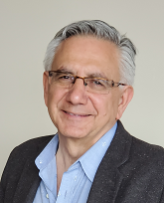 About the Co-presenter: Linus Hakimattar, a chemical engineer by training, is a partner in ReVisionz, where he leads the consulting and strategy team, providing clients with insights, best practices, business capability, and road maps that help define and implement digital technology solutions to transform how they manage physical assets and process safety.
|
AMP Capstone Award Presentation: Metrolinx's Station Fare Transaction Processor Asset Management Framework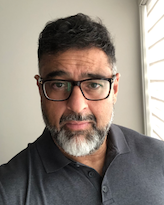 Presenter: Ashvin Koarga
Manager, Asset and Order Management, Metrolinx
Description:
This year's Asset Management Professional (AMP) Capstone Award recipient, Ashvin Koarga, presents his Asset Management journey at Metrolinx and PRESTO, as well as his learnings through the AMP program. His AMP Capstone project was nominated for this year's award, which encourages and recognizes excellence in the AMP program, and following this exemplary presentation attendees will understand why it was selected for this year's AMP Capstone Award. About the Presenter:
Ashvin Koarga is currently the Manager of Asset and Order Management at Metrolinx based out of Toronto, Ontario. His role as manager is specific to the Presto branch of Metrolinx that deals with the fare transaction devices that customers engage with during their daily commutes around the GTHA (greater Toronto and Hamilton areas). |
Local Level Climate Action and Asset Management Planning Presenter: Rachel Mitchell
Senior Manager of Programs, Clean Foundation
Description:
The Town of New Glasgow is actively working to advance ambitious climate and sustainability objectives to reduce local greenhouse gas (GHG) emissions and improve climate resilience. The Town of New Glasgow received a climate staff grant from the Federation of Canadian Municipalities in August 2019 to initiate local-level mitigation work, in line with the Partners for Climate Protection Milestone 5 framework. Asset management and climate action are closely aligned, and municipalities across the country are working to incorporate climate projections into decision-making to prepare for current and future impacts. Asset management can enable evidence-based decision-making to safeguard sustainable service delivery. For small rural communities across Canada, we face increasing challenges to sustainable service delivery. The impacts of the climate crisis are happening at home, and municipalities are on the front line of climate action and community resilience. When we consider the investment needed to improve infrastructure, and the heightened risk from climate impacts, we face a perfect storm. This presentation will explore the Town of New Glasgow’s journey from committing to climate action, to initiating an asset management program (AMP), and the completion of a natural asset management road map. The completion of the AMP by the climate change and sustainability manager was the catalyst to these efforts. Through funded opportunities from the Federation of Canadian Municipalities’ Municipal Asset Management Program, the Town of New Glasgow has leveraged opportunities from external partners to incorporate climate and sustainability considerations into town operations. This presentation will discuss the town’s asset management journey, council commitment, strategic process, and organizational capacity building. About the Presenter:
Rachel Mitchell is the climate change and sustainability manager with the Town of New Glasgow. In this capacity, Rachel oversees the town’s sustainability initiatives, climate mitigation work, community resilience planning, and asset management. Rachel received her BA in Economics from St. Francis Xavier University and completed her M.Sc. in Environmental Studies in the Environment, Resources and Sustainability program from the University of Waterloo. In 2022, Rachel completed the Asset Management Professional program through Northern Lakes College and PEMAC, funded by FCM. Rachel has been leading New Glasgow’s climate change work since 2019, and in that time, the town has approved and begun implementing Corporate and Community Climate Change Action Plans, and initiated an asset management program inclusive of natural assets and climate considerations. The Town of New Glasgow’s climate work has been recognized by the Nova Scotia Federation of Municipalities as one of their 2022 Climate Change Leaders Award winners. In 2023, New Glasgow received the Environmental Impact Award from the local Chamber of Commerce for their climate and sustainability work in the region. |
Whole Life Cost Models – Building Models that Support Asset Class Strategy for Critical Assets Within our Transmission System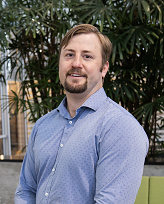 Presenter: Travis Lavallee
Asset Advisor, Manitoba Hydro - Head Office
Co-presenter:
Daymond Gauthier, P. Eng. Asset Advisor Description:
This presentation will provide a detailed look at how Manitoba Hydro builds and applies whole-life cost models for the purpose of projecting performance, cost, and risk for an asset class. The application of predictive analytics, through the use of these models, will be discussed as it relates to a single asset class, to mature Manitoba Hydro’s asset management strategy. About the Presenter:
Travis Lavallee is a professional engineer with 15 years’ experience in asset management, project management, design, planning, and maintenance of hydroelectric utility infrastructure. He has a Certificate in Asset Management from the Institute of Asset Management and a B.Sc. in Electrical Engineering from the University of Manitoba. He is currently leading the development of the asset class strategy for transmission line structures at Manitoba Hydro, in addition to providing asset lifecycle decision-making capabilities for a range of transmission, distribution, and generation assets. 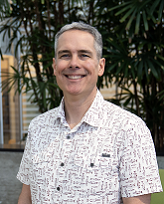 About the Co-presenter: Daymond Gauthier is a mechanical engineer with 28 years of experience in asset management, design, project management, and maintenance in hydro, consulting, manufacturing, and mining. He is a co-author of the Best Practice Guide for the Operation and Maintenance of Cranes and Lifting Equipment, published by CEATI. Daymond holds a certificate from the Institute of Asset Management, and he graduated from the University of Manitoba. Daymond’s area of expertise is asset lifecycle investment decision-making for generators and turbines at Manitoba Hydro.
|
Ecological Transformation and the Circular Economy Presenter: Neil Abercrombie
Technical Director, Municipal Water, Veolia North America
Description:
The case for action on climate change has been accepted by the world, and it is time for commercial and industrial leaders to take action. In Veolia we call this ECOLOGICAL TRANSFORMATION. It represents a proactive and in-depth change in our methods of production and consumption in order to provide the solutions our societies need. In Short, Ecological Transformation means walking the talk and taking real action to achieve society's goals for Climate Action.
I will talk about the need to make our economy more "Circular", what that means and ask if we, as Asset Management Professionals, are prepared. Finally I will use a case study of Electric Vehicle Battery management to illustrate the concepts that I hope you will find interesting. About the Presenter:
I trained as an engineer in the 1980’s in the British Merchant Navy. I later studied Mechanical Engineering at the University of Glasgow (Scotland) and switched industries to work for Thames Water, the UKs’ largest water company, through their graduate program. This turned out to be an excellent foundation in Asset Management as they put me to work in every department of the water utility and I experienced every part of the asset management landscape. At that time Thames Water were beginning to explore the benefits of an Asset Management approach as a way to challenge the organisational silos within the company. Since then, I have developed my career in the water industry working on four continents and within multiple cultures. I have worked in many parts of the Asset management Landscape including: Operations; Maintenance; Program Management; Project Management; Commissioning; Procurement; and Operational Readiness. Reliability is baked into facilities during design and I have worked on many major wastewater upgrade projects where I brought operations and maintenance knowledge to the design phase. Besides my undergraduate Bachelor's degree in Mechanical Engineering, I have a Master of Science in Environmental Decision Making and I am a Certified Asset Management Professional through PEMAC. I am a PEng. with Engineers, Geoscientists Manitoba and a Fellow of the Institution of Mechanical Engineers in the UK. |
24/7 Beverage Filler Condition Based Monitoring and Precision Lubrication Challenges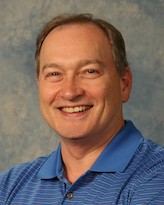 Presenter: Bob Kazar
CEO, RTK Asset Management LLC
Description:
This presentation discusses several problems involving lubrication and condition monitoring requirements on two bottle fillers running in a 24x7 operation. These units are producing plant-based almond as well as oat milk, and are experiencing demand of the double-digit growth for the past several years. This growth has elevated production compliance to the highest priority as the company continually must meet all customer order commitments of both quality and quantity. Maintenance and Reliability are considered extremely important but shutting down equipment for routine lubrication or maintenance had to be avoided. This scenario required a condition-based approach to avoid unnecessary downtime.
Specific Filler design of critical components has presented unique challenges for monitoring. These components have had a low MTBF which resulted in costly events. Utilizing the support of UE System application expertise, the facility deployed the 'Ontrak' system by UE Systems. This approach allows for continuous condition-based monitoring but also real-time data on lubrication activities and effects. Technicians can monitor the results of their lubrication effort and monitor component health in real-time. This presentation will explain the challenges, trials and eventual success of deploying daily condition based monitoring and maintenance approach without impact to equipment uptime. About the Presenter:
Bob is an industry leader in the application Maintenance, Reliability, and Asset Management practices. He has been a leader in SMRP serving in numerous committee chair roles as well as extensive time on the board of directors culminating with serving as SMRP Chairman in 2016. Bob has worked in the food and manufacturing industries service as maintenance leader, reliability director and has extensive experience with multiple CMMS applications, SAP, MRO inventory management, and facilities as well fleet management. He was most recently leading the maintenance organization at CalifiaFarms, which is a global leader in the production of almond and oat milks. Bob holds a degree in Information Systems from the University of Toledo, an MBA from the University of Findlay, and his CMRP and CMRT professional certifications from SMRP along with his C10 and C36 state contractor’s licenses. |
Shutdown Management for Maximum Production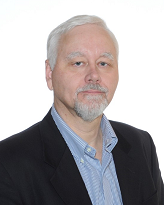 Presenter: Paul Batten
Director Asset Management, Outliers Mining nSolutions
Description:
Shutdown is a generic term for what may be called an outage, turnaround (TAR), or overhaul. Running a shutdown well has always been key to the financial contribution of a business. However, something important has changed. The post-pandemic reality is that turnover and extended vacancies are eroding established maintenance processes that now struggle to yield the required plant availability. One tactic to mitigate this is to make the process “turnover-proof.” This is achieved through disciplined execution of documented processes backed by role definitions, training material, cross-training, and training the trainers, etc. The good news is, that tactic is entirely within the control of the maintenance area to create. This presentation proposes a framework to manage plant shutdowns in the mining industry and discusses four case studies, one of which is currently ongoing. The case studies are selected to show application over a range of different size shutdowns, from micro to mini to macro. Shutdowns vary immensely in nature, scope, and duration but all have four common objectives: do no harm (safety and environment); reliability restoration, (i.e., plant runs reliably until the next planned outage); schedule compliance—complete the work within the planned shutdown duration; and shutdown budget compliance. Like any other work, executing a shutdown is a process. It can be thought of as a combination of the weekly maintenance work cycle and a project, as it has elements from both, and any work process can be optimized. Shutdowns have two main loss drivers that impact production: shutdown duration, including schedule overruns; and unplanned outages, post-shutdown, due to work not done or work poorly done during the shutdown. While this presentation focuses on the management of shutdowns to control schedule and restore reliability, it should be noted that these improvements in execution will also benefit safety and cost. About the Presenter:
Paul Batten is an experienced mining industry executive with over 30 years in global miners such as KGHM, Barrick Gold, and Placer Dome. Most of this experience is in asset management in both underground and open-pit operations, which include mine, plant, and facilities maintenance. |
Quantify and Simplify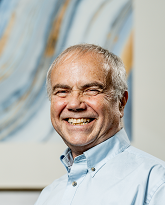 Presenter: James Reyes-Picknell
Managing Consultant, Conscious Asset
Description:
As maintainers, we know there is a lot of value in what we do. Without our work, plant, and equipment will soon stop and our companies will then go out of business. What we do impacts safety, health, revenues, costs, and company reputation. A dirty little truth about maintenance is that it is only we who work in it, that really know the value of what we do – or do we?
We do know our value in qualitative terms, but can we quantify it? Most maintenance can be improved and we know it. We can do things more efficiently, and we can keep things running more reliably. We often know how to do that, but when we want to make those improvements there is no money for them. Why?
Most business people know very little about what we do and how it impacts their business. They see maintenance as a repair shop. We fix what breaks. And they know little, or nothing, more. They may know that maintenance represents a significant cost, and they may even know that they can’t get away with cutting it too much. But they do not know the full value of what maintenance can deliver, nor what it takes to deliver it.
If you want to make improvements you need a decision-maker, someone with executive-level authority, to back you up. To get that, you will need to explain what value you can deliver, and in terms they can understand. You will need to show them the savings that are possible from doing things more efficiently, and the added revenues that can arise from investment in defining the right work. You will also need to show them how their support is needed to bring operators and the supply chain into the team with you to make those changes happen so that benefits are fully realized.
Quantifying value and being simple in how you say it matters.
About the Presenter:
James Reyes-Picknell is an MMP instructor, PEMAC volunteer, and former board member. He is Founder and President of Conscious Asset, and author of the bestseller Uptime—Strategies for Excellence in Maintenance Management, several other books, and numerous magazine articles. His latest publication in April 2017, co-authored with Jesus Sifonte, is destined to change the RCM world for the better while showing how RCM is an integral aspect of asset management. Reyes-Picknell is a professional engineer, certified management consultant, and a thought leader in the fields of maintenance and asset reliability. He works with clients in asset-intensive industries such as resource extraction and processing, utilities, transportation, and manufacturing, where high reliability is a key to business success. |
Asset Management decision making innovations: The new paradigm of maintenance practices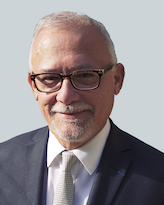 Presenter: Celso de Azevedo
Directeur Général, IFRAMI
Description:
In recent decades, methods to optimize maintenance practices have experienced significant development.
From risk-based maintenance to value-driven maintenance, its contribution to extracting value from the entire asset lifecycle catalyzes the strength of the emerging arguments in favor of Asset Management
The advent of risk monetization algorithms made it easy for managers to have unprecedented decision scenarios in their daily lives thanks to new cost/risk, Capex/Opex, short/long term trade off techniques.
The company that takes good care of its assets began to envision assets that take good care of the company's business.
With what gains did these techniques increase the results?
The definition of decision scenarios based on trade off makes companies gain time in relation to traditional heavier and slower methods.
In addition, the great speed with which these scenarios improve the essential points of the strategies (optimal PM interval, cost of non-decision, monetized risk, …) showed an unprecedented result: the low economic sensitivity to technical decisions.
It is known, for example, that most preventive maintenance tasks have their periodicity economically insensitive in companies where they practice them with a good degree of maturity. Indeed, thousands of simulations prove to us that there is a great deal of room for maneuver around the optimal maintenance intervals without these variations having a major budgetary impact.
This presentation will show numerous cases in which the results produced with this approach represent innovations that bring savings and technical efficiency for maintenance and the Asset Management Journeys. About the Presenter:
Celso de Azevedo, Ph. D. is an asset management specialist, known mostly for his development of highly performant methodologies in the field of industries and public infrastructures. These solutions involve the Risk/Cost and CAPEX/OPEX trade off approaches and Life-Cycle Costing projects. Founder and CEO of ASSETSMAN, Celso is at the head of an international consulting company that specializes in conducting physical asset management studies for infrastructure decision-makers. ASSETSMAN has offices in France and Brazil, has been working in a dozen different countries since 2000. Celso is the founder of IFRAMI (French Institute of Asset Management), a Council member of Global Forum on Maintenance and Asset Management, Fellow of the Institute of Asset Management (UK) and Chair of the French ISO 55000 National Committee. Celso de Azevedo, titulaire d'un doctorat, est un spécialiste de la gestion des actifs, principalement connu pour le développement de méthodologies très performantes dans le domaine des industries et des infrastructures publiques. Ces solutions impliquent les approches d'équilibre Risque/Coût et Capex/Opex ainsi que les projets de coût du cycle de vie. Fondateur et PDG de ASSETSMAN, Celso est à la tête d'une société internationale de conseil spécialisée dans la réalisation d'études de gestion des actifs physiques pour les décideurs en infrastructure. ASSETSMAN dispose de bureaux en France et au Brésil et travaille dans une douzaine de pays différents depuis 2000. Celso est le fondateur de l'IFRAMI (Institut Français de la Gestion des Actifs), membre du Conseil du Global Forum on Maintenance and Asset Management, Fellow de l'Institute of Asset Management (Royaume-Uni) et président du Comité national français de l'ISO 55000. |
Mechanical Cutting and Reliability in Potash Presenter: Ryan Fairbrother
Director, Potash Maintenance and Reliability, Nutrien
Description:
Potash has been mined using mechanical cutting with large boring machines since mines were first developd in Saskatchewan. Over the past 60 years, designs have been bought and sold, re-engineered, made better and made worse. Remote operation and automation has opened new possibilities for safety and productivity, but also exposed flaws in existing mechanical designs. This presentation will review some of the history that has brought us to the present, some of the work underway today, and some glimpses into the future of mechanical cutting in potash. About the Presenter:
Ryan Fairbrother is the Director of Maintenance and Reliability for Nutrien Potash, supporting the six Nutrien potash mines in Saskatchewan. Throughout his 19 years with Nutrien, Fairbrother has constructed and maintained assets from the borer end of the mine through the hoisting systems and out the back end of the mill. He is passionate about reliability engineering and continuous improvement. |
Increasing Asset Efficiencies Through Operator Driven Safety and Reliability Programs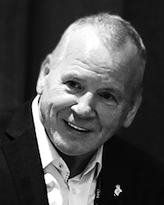 Presenter: Martin Robinson
Group CEO, IRISS Group
Description:
Electrical maintenance programs have prioritized “reliability” for years but failed to apply it effectively, resulting in preventable failures. Operator-driven safety and reliability (ODSR) is a cost-effective asset management program that enhances reliability by engaging operators in asset maintenance through inspection routes and process parameter monitoring. This team-based approach involves multiple departments, reducing fire and failure risks while improving safety and reliability. Implementing ODSR necessitates creating a skills matrix, reengineering systems for safe and repeatable inspections, and adopting a continuous improvement model for training and monitoring activities. By developing “process rounds,” operators take ownership of equipment functionality, using baseline condition-based maintenance (CBM) instruments like IR cameras, partial discharge detectors, ultrasound probes, and vibration analysis equipment. Effective communication between operators and reliability technicians is essential, including clear departmental roles, inspection route schedules, automated follow-up paperwork, and a feedback system for training and role recognition. In addition, this new strategy replaces outdated maintenance practices to manage risks better. ODSR implementation provides financial and environmental benefits by increasing operational reliability, reducing downtime, and minimizing the need for spare parts and service items. This leads to less waste, decreased shipping/support costs, and improved asset utilization. In addition, with fewer shutdowns and start-ups, the overall carbon footprint is reduced, resulting in a cleaner and more efficient operation. About the Presenter:
For over 30 years, Martin Robinson has been a pioneer in the field of condition-based maintenance (CBM) technology. He spent 18 years in the British Army specializing in field maintenance of combat fleet vehicles. Martin continues to be an innovator and pioneer in the technological benefits of infrared thermography (IR) internationally. He has met with, consulted, or advised international maintenance and reliability leaders on electrical preventive maintenance (EPM) and electrical safety standards of NFPA and OSHA. A recognized authority in the field of IR, Martin has designed CBM programs to include IR, non-destructive testing (NDT), and implementation of green energy initiatives and energy management strategies. Martin holds a NEBOSH certificate in Occupational Safety and Health; he is a Level III Certified Infrared Thermographer and a Certified Maintenance and Reliability Professional (CMRP) through the Society for Maintenance and Reliability Professionals (SMRP). He is also a member of IEEE and NFPA, and is a standing member on the technical committee CSA Z463 guidelines on maintenance of electrical systems and a member of the IEEE P1854 working group (Recommended Practice for Electrical System Design Techniques to Improve Electrical Safety). Martin is a reliability partner with Reliabilityweb and is CRL certified. |
A Successful Application of Community of Practice for Knowledge Management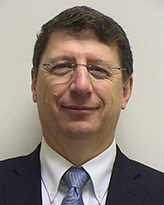 Presenter: Bill Mercer
Senior Advisor, Capital Power
Description:
Most successful organizations recognize that a large part of their corporate value is generated by the tacit knowledge and skills of their internal personnel, but often fail in finding ways to manage this elusive asset. This presentation will provide a framework and actual example of one method used to successfully capture and broaden the base of knowledge that are identified as being core competencies for the organization. The senior leaders of any successful organization are able to quickly identify what they believe to be their core competencies, which create their competitive advantage within an industry. Usually these include specific skills and practices that rely on the tacit knowledge of specialists and experts within various departments. However, these same leaders and organizations often fail to effectively capture and manage this knowledge effectively, leading to asset reduction when key individuals leave or retire. This failure to capture knowledge may happen even when specific knowledge management systems (KMS) have been used by the organization. KMS fail when the key individuals do not feel engaged, or simply do not have time for a human resource-driven initiative that drags them away from “important work.” Another common failure cause is when key knowledge owners are dispersed across different departments or geographic locations within the organization and, therefore, do not have a method to share or improve their knowledge base. This presentation proposes an alternative method commonly referred to as a Community of Practice (CoP). The CoP approach is successful in capturing knowledge across a widely dispersed organization and can achieve buy-in from those most needed for its success. We’ll present the framework and tools for building a CoP and a real example of its application in a multinational organization to building a set of standards and practices for fleet-wide vibration and rotor dynamics monitoring and evaluation. About the Presenter:
Bill Mercer is senior manager with more than 35 years of experience in energy, infrastructure, asset management, operations, and maintenance. He has a Power Engineer 1st Class, an MBA, and certifications in Quality Assurance and Asset Management. He presently works as a senior advisor for Capital Power. Bill has broadly based progressive management experience, primarily in the power generation industry with a strong background in general management, operations, R&D, asset management, reliability, and maintenance. Starting in operations at coal-fired generating plants in central Alberta, Bill worked in business development, financial management, and maintenance management before starting an international career operating and managing facilities and service departments in New Zealand, Asia, Europe, and Canada. He has been an active member of PEMAC for over 12 years and has been on the National Board of Directors for the past three. |
Value From Asset Lifecycle Decision Making (French) Presenter: Celso de Azevedo
Directeur Général, IFRAMI
Description:
La valeur de la prise de décision du cycle de vie des actifs
Il existe de nombreuses façons pour une organisation d'extraire de la valeur de ses actifs. Selon la définition de la gestion des actifs, la réalisation de valeur à partir des actifs implique des processus de gestion des actifs plutôt que des interventions directes sur les actifs (gestion des actifs). Historiquement, la manière dont les entreprises conçoivent une
stratégie en faveur de la performance de leurs actifs est souvent basée sur des principes de gestion des risques à travers des analyses de criticité, des diagrammes de Pareto ou similaires. Ces approches visent à répondre aux questions liées à la vulnérabilité des actifs, à la production et/ou aux dimensions liées à l'intégrité des installations ainsi qu'à leurs impacts sur la sécurité, la santé et l'environnement. Ainsi, on suppose que les pannes évitées sont des générateurs de valeur ou du moins des promoteurs d'économies ou de dépenses évitables. Avec le développement des capacités spécifiques à la discipline de la gestion des actifs (équilibre Coût/Risque ; Capex/Opex ; Court/Termes Longs), les retours d'expérience accumulés au cours des 20 dernières années ouvrent de nouvelles perspectives innovantes pour les processus de prise de décision. Cette présentation montrera des cas où la réalisation de valeur à partir des actifs basée sur les ratios Risque/Coût ou Capex/Opex peut surprendre l'intuition ou du moins la perception que nous avons des solutions classiques centrées sur les actifs. À cette fin, nous mettrons en évidence deux constatations majeures qui ont désormais été scientifiquement prouvées : la première concerne la grande proportion d'activités de maintenance qui ne sont pas économiquement sensibles à la périodicité des actions préventives. La seconde est la preuve que le moment optimal pour remplacer les actifs en fin de vie dépend davantage des nouveaux actifs (candidats) que de celui actuellement à remplacer. L'auteur présentera de nombreux cas d'application concrets qui renforceront la démonstration des innovations objet de cette présentation.
There are many ways an organization can extract value from assets.
According to the definition of Asset Management, realizing value from the assets involves asset management processes rather than interventions directly on assets (managing of assets).
Historically, the way in which companies design a strategy in favor of the performance of their assets is often based on risk management principles through criticality analysis, Pareto diagrams or similar. These approaches aim to answer questions related to the vulnerability of a assets, production and/or dimensions related to the integrity of the installations as such impacts on safety, health and the environment. Thus, it is assumed that avoided failures are value generators or at least promoters of savings or avoidable expenses.
With the development of capabilities specific to the Asset Management discipline (trade off Cost/Risk; Capex/Opex; Short/Long Term) the feedback accumulated over the last 20 years of these practices opens up new innovative perspectives for decision-support processes.
This presentation will show cases where the realization of value from assets based on Risk/Cost or Capex/Opex ratios may surprise intuition or at least that perception we have of classic solutions centered on assets.
To this end, we will highlight two major findings that have now been scientifically proven: The first is the large proportion of O&M activities that are not economically sensitive to the periodicity of preventive actions. The second is evidence that the optimal time to replace end-of-life assets depends more on new assets (candidates) than on the current one to be replaced.
The author will present numerous concrete application cases that will reinforce the demonstration of the innovations object of this paper. About the Presenter:
Celso de Azevedo, Ph. D. is an asset management specialist, known mostly for his development of highly performant methodologies in the field of industries and public infrastructures. These solutions involve the Risk/Cost and CAPEX/OPEX trade off approaches and Life-Cycle Costing projects. Founder and CEO of ASSETSMAN, Celso is at the head of an international consulting company that specializes in conducting physical asset management studies for infrastructure decision-makers. ASSETSMAN has offices in France and Brazil, has been working in a dozen different countries since 2000. Celso is the founder of IFRAMI (French Institute of Asset Management), a Council member of Global Forum on Maintenance and Asset Management, Fellow of the Institute of Asset Management (UK) and Chair of the French ISO 55000 National Committee. Celso de Azevedo, titulaire d'un doctorat, est un spécialiste de la gestion des actifs, principalement connu pour le développement de méthodologies très performantes dans le domaine des industries et des infrastructures publiques. Ces solutions impliquent les approches d'équilibre Risque/Coût et Capex/Opex ainsi que les projets de coût du cycle de vie. Fondateur et PDG de ASSETSMAN, Celso est à la tête d'une société internationale de conseil spécialisée dans la réalisation d'études de gestion des actifs physiques pour les décideurs en infrastructure. ASSETSMAN dispose de bureaux en France et au Brésil et travaille dans une douzaine de pays différents depuis 2000. Celso est le fondateur de l'IFRAMI (Institut Français de la Gestion des Actifs), membre du Conseil du Global Forum on Maintenance and Asset Management, Fellow de l'Institute of Asset Management (Royaume-Uni) et président du Comité national français de l'ISO 55000. |
Why Turnarounds are the Middle Finger of Asset Management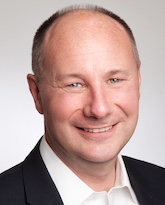 Presenter: Ron Bettin
President & Principal Consultant, Adduco Consulting
Description:
This presentation provides insight and guidance to key stakeholders, from leadership to shop floor, on why turnaround alignment is important. We will also explore the major causes of gaps and misalignment, including lack of understanding of the complexity of turnaround projects; integration of maintenance, operations, inspection, and capital work that occurs during a turnaround event; different perspectives of typical work vs. turnaround work; managing stakeholders’ focus on urgent vs. important; awareness of strategy and plans; and understanding of the true business impact of a turnaround. It’s important that all participants and stakeholders understand these alignment issues and implement measures to close the gaps early in their project. This will pay off exponentially when you execute your turnaround event. About the Presenter:
Ron Bettin is a respected industry executive and business leader. With a vibrant entrepreneurial spirit, he is the co-founder of several companies, including two energy companies. Cross-functional business and technology understanding gives Bettin a unique perspective to help companies grow and transform. As a leader, Bettin provides strategic business and project management skills to fill leadership gaps from small start-ups to large organizations. He is a graduate of Queen’s University Executive MBA, SAIT’s Industrial Engineering Technology (Operations Management), and a Second-Class Power Engineer. He has studied at the China Europe International Business School in Shanghai and is a Prosci® Certified Change Practitioner. Earlier in his career, he was actively involved with PEMAC, helping to establish the Alberta Chapter and proactively encouraging those he worked with to engage in the MMP program. He was the 2007 winner of the PEMAC Sergio Guy Memorial Award and continues to offer support by maintaining his PEMAC membership. |
Asset Reliability Digitalization with Purpose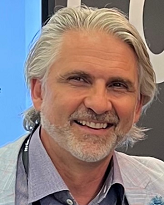 Presenter: David Armstrong
Sr. Director, Cohesive
Description:
Digitalization for sustainable operations. This presentation will discuss digitalization for sustainability, discuss the hype cycle for AI/ML lead initiatives, and provide a road map for real-world actions. Actions must include a bottom-up approach to delivering sustainable value and return on investment for a tactical realization of your organization’s ESG sustainability goals. A case study will show how a digitalized reliability initiative improved asset availability by 25% and reduced flaring by more than 80% over the past five years. About the Presenter:
David Armstrong merges field-proven capabilities with the practical experience of building digital asset management systems with leading transformative change. He has helped asset owner/ operators for 25-plus years from the ground floor up to achieve significant results in the areas of operational and reliability excellence, investments and engineer-procure-construct, enterprise configuration management, and asset performance management. This puts him in the ideal position to pull through a cohesive solution to integrate engineering, operations, and maintenance across the complete asset lifecycle. David joined Cohesive—a digital integration organization and wholly owned subsidiary of Bentley Systems—in January of 2022 after 11 years successful years within Bentley Systems’ asset performance team. David holds a master’s Certification in Enterprise Configuration Management from the University of Phoenix. He is an Aladon RCM2 Practitioner, Six Sigma Blackbelt, and PMP that pairs certifications with practical battle scars from running cultural change management initiatives within the following asset-intensive industries: heavy industry steel, O&G, water and power utilities, and mining. Typically, he challenges his projects to drive out costly variation by understanding the contributing root cause data points that not only determine the right strategies at the right time, but also enable actionable results within the evolving science of data analytics. He is passionate about deriving maximum results from the circular economy, and fostering discussions on socially responsible projects and inclusive societal systems and programs, supported by digital enabling solutions. |
GFMAM Asset Management Landscape Revision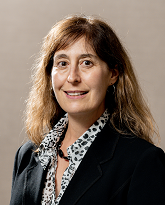 Presenter: Susan Lubell
Principal Consultant, Steppe Consulting Inc.
Co-presenter:
Dave Daines Past Chair Australian AM Council, Secretary of WPiAM, AMC delegate to GFMAM, Program Manager for GFMAM Landscape Revision Description:
The AM Landscape publication specifically provides guidance on the breadth of Asset Management with a focus on the key topic areas people and organizations should know and understand. It also provides a common framework that member organizations (and others) to compare, contrast and align Asset Management Knowledge and Practices and how this all connects in a Global context.
The AM Landscape has been the foundation document of the GFMAM. It was last updated (2nd Edition) in 2014 to coincide with the launch of the ISO 5500x standards. There have been advancements in Asset Management over recent years and it is important that this document is kept current.
Before considering any revisions, the GFMAM sought to understand how this AM Landscape document is being used in the practice of asset management, and the aspects that people using it, find meets the future needs of the discipline.
The GFMAM initiated a Review from its Member Societies and their experts with respect to the AM Landscape Edition 2. 2014. The Stage 1 Review conducted under Project 23 focused only on understanding the potential requirement for a Revision of the existing version. The outcomes of this Review indicated a unanimous (from GFMAM Members) desire to enter a Revision process.
The Revision process is now reaching the delivery point of the First Draft and this presentation will discuss the process and outcomes to date. About the Presenter:
Susan Lubell—P.Eng., MBA, MMP, CAMA—has extensive experience in the fields of asset management, reliability, maintenance management, and operational excellence. She brings over 25 years of progressive experience leading teams through their improvement journeys, connecting organizational business goals and objectives with practical actions implemented at the front line to drive business results. The author of Root Cause Analysis Made Simple, Susan has had a variety of industry roles, including director and past-president of PEMAC, chair of the PEMAC Competency Committee, and chair of World Partners in Asset Management (WPiAM). Her current role is on the Steering Committee for the Global Forum on Maintenance & Asset Management (GFMAM) Landscape revision. 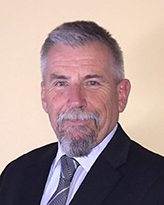 About the Co-presenter: An Asset Management professional with significant experience in all aspects of Asset Management at an operational and corporate level within the Resource Sector. Dave has an extensive background that has always involved working in demanding and challenging roles drawing on strengths in leadership, strategy development, decision making and financial management to deliver solid results.
Throughout his career, Dave has continued to enhance his professional qualifications and personal development to build capability in an ever-changing environment. He remains committed to learning and sharing his knowledge and experience with individuals and organisations. His professional associations afford him with a unique insight to the international stage of asset management across a broad spectrum of industries.
PROFESSIONAL ASSOCIATION
• Asset Management Council of Australia
Board Director & Past Chair of Asset Management Council
Representative on Global Forum of Maintenance and Asset Management (GFMAM)
• ISO Standards Committee TC 251 – Asset Management: Australian Mirror Committee MB-19
Chair for the Australian Mirror Committee for Standards Australia. Representing Australia’s interest on the ISO Technical Committee development of the ISO 5500x Asset Management Standard
• World Partners in Asset Management
Company Secretary on Board of International organisation developing Assessor Competency & Global Certification scheme for Asset Management.
|
The Key Elements to Successfully Transition to Planned Maintenance using Industry 4.0 Digital Technologies Presenter: Jean Charbonneau
President, CiM Maintenance INC
Description:
According to recent maintenance maturity surveys, more than half of asset intensive companies still operate with unplanned maintenance work levels over 50%.
The objective of this presentation is to have the attendees understand how to use Industry 4.0 digital technologies to successfully transition to a planned maintenance work culture and get out of the relentless reactive mode. A successful transition to planned maintenance is centered around developing the right maintenance strategy with predictive analytics 4.0 based on equipment criticality, as well as ensuring that the work required to prevent equipment failures is always performed on time by putting in place an efficient multi-week scheduling process with rigorous schedule compliance monitoring.
The presentation will cover how to use 4.0 digital technologies to ensure the PROCESS is performed flawlessly by ensuring that the PEOPLE involved are playing the role that they are assigned to, allowing for a successful implementation that can be standardized across an organization. We will also present the business case of a major energy company that successfully performed the digital transformation to planned maintenance, achieving over 85% planned work. This success is not universal. According to a recent McKinsey survey, only 4% to 11% of asset intensive companies’ digital transformation projects provide the expected benefits. Achieving the expected return from a digital transformation project involves much more than just implementing digital technology. It absolutely requires that PEOPLE and PROCESS be at the forefront of the business transformation initiative. About the Presenter:
Jean Charbonneau has over 30 years of experience as a reliability engineer and consultant in asset performance. Twenty-five years ago, he founded the Maintenance Excellence Group, putting together a team of asset reliability experts to assist asset-intensive organizations with performing the right maintenance, at the right time, at the lowest cost. Charbonneau is a worldwide renowned speaker and an industry-leading influencer on the best strategies for asset-intensive organizations to advance to the Industry 4.0 era and maximize their asset performance and production output. |
Maintenance Rightsourcing Decision Making Process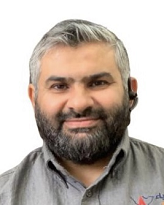 Presenter: Ghanim AlQahtani
Manager, Saudi Electricity Company
Description:
When an organization goes for restructuring, it has to re-evaluate all of its activities and decide whether to insource or outsource them. This decision must be based on a feasibility study of each activity to evaluate many aspects to ensure the organization achieves its objectives. Most organizations prefer to outsource their maintenance activities to reduce costs or to obtain a higher level of flexibility on resources without evaluating encountered risks such as lack of control or low quality. This presentation will discuss the aspects that have to be evaluated and considered when making this decision and elaborate on the decision models that can be used to make the decision-making process effective and successful. About the Presenter:
Ghanim AlQahtani has a B.Sc. in Mechanical Engineering and an M.Sc. in Construction Engineering and Management, both from the King Fahd University of Petroleum & Minerals. He is currently the large power plant department manager for the Ghazlan Power Plant of the Saudi Electricity Company. |
BRIDGE: Finding Productivity through Diversity and Inclusion Presenter: Melissa Ruth
Senior Manager, Advisory Services, Cohesive
Description:
What if diversity and inclusion were more than what we can physically identify? What if the key to true results from diversity and inclusion initiatives wasn’t ticking boxes to ensure you have met the letter of the law? Lastly, what if diversity applied not just to affirmative action but to how your people and departments work together and the results of that collaboration (or lack thereof)? This presentation will answer these questions and discuss a framework for building a culture that not only is diverse, inclusive, equitable, and inviting but also enables synergy and productivity within your facility. We will discuss the BRIDGE principles and then apply them in a way that enables engineering, asset management, and maintenance to become productive and healthy cultures for all. Lastly, we will provide tools and strategies for empowering employees to speak up and share their ideas. This is not your typical diversity and inclusion discussion that’s generally limited to HR. This is a tool to enable diversity and inclusion from within. Whether you’re a manager or team member, or just starting out in your career, this presentation will provide you with the knowledge and skills necessary to build a more diverse, inclusive, and equitable workplace. About the Presenter:
As senior managing consultant of advisory services in Cohesive, Melissa Ruth has more than 20 years of experience as a technology consultant and strategist in the software industry. Ruth utilizes her MBA, certified effective facilitator, and certified reliability leader certifications with finesse, assisting each customer toward the goal of finding those quick wins and long-term gains while ensuring both processes and systems work better together. While her career has been focused primarily on configuration management as it applies to facility, asset, and document management, it is her passion to help teams work better together that gets her the results her customers need. She has spent her career leveraging effective change management and advanced problem-solving skills in a way that provides a great customer experience. |
The Influence Of National Culture Dimensions On Operational Discipline In Brazilian Oil & Gas Industry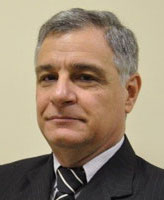 Presenter: Joao Lafraia
President, Fábrica Carioca de Catalisadores S.A.
Description:
In this work, we present a quantitative study in a business unit of a Brazilian Oil and Gas Company to verify if organizational power distance, uncertainty avoidance, autonomy, and trust between leaders and followers, measured by an organizational culture questionnaire, affect the capacity to produce the desired operational discipline to achieve better ESG results. Previous studies emphasize the importance of intangible factors in internal coordination for operational discipline. However, the combination of low trust, high power distance, high uncertainty avoidance, and collectivism creates a culture of reactive planning, short-term focus, and excessive formal controls, which significantly increases transaction costs, does not promote efficiency and effectiveness, nor the ability to solve complex and systemic problems, according to the current epistemology on the subject under revision. Our results show that individualism and uncertainty (risk) avoidance predict operational discipline, whereas power distance and trust have a moderation effect in the first two variables. About the Presenter:
João R. B. Lafraia is an expert in companies' transformations, mainly through assets management and operational excellence. He has more than 25 years of experience leading the implementation of advanced maintenance & reliability, safety and asset management system in major Oil Refineries and Exploration and Production offshore Business Units in Brazil. Since he decided to change from a technical to a managerial career, he has assumed several management and executive positions in the Oil & Gas and Petrochemical industry in Brazil. |
VCNA - SIGGA Technologies Business Program Integration Model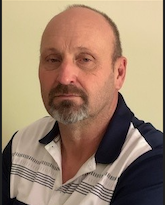 Presenter: Frank Stegnar
Manager II, Maintenance & Production Automation Weston Office, Votorantim Cimentos
Co-presenter:
Ty Levine Vice President, Global Marketing Description:
SIGGA Technologies deployment with Votorantim Cimentos SAP PM About the Presenter:
Frank is the Maintenance and Automation Manager for Votorantim Cimentos CBM. He holds many trade licenses and has risen from the ranks after spending roles in Maintenance, North America Maintenance Planning and Project Management. He is well known in the industry after spending 35 years in the maintenance field and witnessing many changes and deeply part of new continued innovations. He has sat on various Government regulatory bodies in Canada for new legislative code requirements being brought forward and his input has had impact on those code initiatives in the maintenance industry in general. Frank finds ways to challenge himself by increasing equipment life cycles, exploring deeper preventative measures and placing his highest assignment on team building a new generation of maintenance personnel which includes the use of the most recent changes in technologies available. 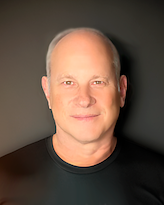 About the Co-presenter: Ty is a builder. He has spent most of his career at startups and high growth companies. Throughout his career, he has brought a combination of marketing and business development experience to nurturing people, building high-performing teams, and developing market leading companies. He has taken three companies from irrelevancy to industry leadership status. Known as a contrarian, Ty seeks to find indirect ways to connect with people and customers. He is always quoted as saying, “I believe 1+1 can equal 3.”
|
Creating an Asset Management Culture for Success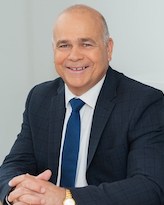 Presenter: John Hardwick
Executive Director - Asset Management, Roads and Martime Services NSW
Description:
This presentation will reflect on a large scale implementation of Asset Management across a multimodal transport business. The implemenation is across an organisation of about 30000 people. It will explore how the implementation was integrated with the corporate planning process and budget setting. It will show how the credibility of the implementation was based on how it could create value to government, customers and the community. It will explore the value creation that has been achieved and how more than 10 times the dollars spent on Asset management is being achieved. About the Presenter:
John is the Executive Director Asset Management at Transport for NSW and is responsible for leading and enabling transport service outcomes for customers and communities through effective whole of life asset management. John was previously the Executive Director, Sydney Division for former Roads and Maritime Services where he lead the division’s first Strategic Asset Management Plan and the implementation of full battery electric vehicles into Sydney division’s passenger fleet. |
Asset Management - Engaging with the Enterprise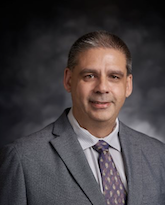 Presenter: Jim Pawluk
Director, Manitoba Hydro
Description:
The keynote will look at engagement in the topic of Asset Management with leaders within Manitoba Hydro, describe how at Manitoba Hydro we are continuing and expanding the conversation on Asset Management, and some feedback received on Manitoba Hydro’s Asset Management. It will also touch on an Asset Management system approach. About the Presenter:
During his 9 ½ years at Manitoba Hydro he has spent time in Asset Management, Generation Projects and Generation Design. Jim was a witness at the recent electric General Rate Application hearings. One of the first projects he was involved in at Manitoba Hydro was Kettle Generating Station Units 1 to 3 Stator Replacement as a Project Engineer. Since that time Jim has help positions of Team Lead, Section Head and Department Manager before becoming a Director. |
Thriving Instead of Surviving: How Redundancy Can Save Money Presenter: Danaka Porter
Regional Managing Partner, Iota Consultants
Description:
Thriving instead of surviving: how a little bit of redundancy is helping companies to thrive in tumultuous times. Changing the strategy and planning around “trimming the fat” or “make it lean” is going to take some time, but the change is required. The events of the past four years have proved that “lean and mean” is more akin to clinging on by the fingernails or being left behind. Proper asset management strategies depend on being able to access parts in a timely manner so that preventative maintenance can be performed as scheduled. Keeping a spare or critical spare on hand acts as a buffer when a supplier is unable to deliver on time, or a shipment is stuck waiting in a port. It may appear to be a “waste of money,” as this piece of inventory is now hitting the bottom line and is not yet needed; however, what is the cost of not having it? Or the cost of having to outsource it last minute? Moreover, how are the supplier relationships? This presentation will explain how redundancy can help save money and time through changing how businesses operate and view their bottom line. Attendees will learn how to review and calculate the cost of a stockout and compare it to holding a spare or critical spare; hear how to set or adjust inventory review policies; and discover that having multiple supplier options will help operations continue even in times of change and emergency. About the Presenter:
Danaka Porter obtained her Master of Engineering in Systems and Supply Chain from MIT. She is a partner at Iota Consulting, a management consulting firm, where she consults in supply chain, project management, and data analytics in heavy manufacturing and technology. Danaka is also a sessional lecturer at the Dhillon School of Business, where she teaches Supply Chain and Project Management. She has written a supply chain textbook, as she did not feel the current ones contained enough application of supply chain and focused too heavily on theory. Her algorithm writing took her into the medical side; Danaka is a co-founder and the current COO of VitaNova Tech, a fertility company in the U.S. She wrote algorithms to better match surrogates and egg donors with intended parents. She is currently completing her PhD in Cardiology at the Cumming School of Medicine where she is using machine learning to help predict SCD (sudden cardiac death) by rewriting the algorithms that are currently being used to find certain markers. Danaka sits on the Training and Education Committee for the Cardiac Arrhythmia Network of Canada, where she educates other PhDs, trainees, doctors, and healthcare workers in implementing and using technology in cardiac care. She also sits on the board of motionball, a national fundraising committee dedicated to raising money for Special Olympics. |
Review of Equipment Strategies in a Manufacturing Company (French) Presenter: Mario Bergeron
Director - Consulting Services, STI Maintenance inc.
Description:
Revue des stratégies d’équipements chez une entreprise manufacturière
Ne serait-il pas formidable de pouvoir se comparer aux meilleurs de l'industrie ? Ou d'avoir l'aide d'un expert pour nous aider à prioriser nos actions ? En suivant l'exemple d'un cas réel, apprenez le processus qui permet une fiabilisation efficace et ciblée sur un site.
Vous découvrirez l'importance de définir une stratégie gagnante basée sur la situation actuelle. En commençant par les pratiques existantes, vous pouvez engager les parties prenantes de la gestion des actifs et générer un enthousiasme pour l'amélioration. Vous pouvez donner un sens à votre initiative d'amélioration et visualiser le parcours et la contribution de chacun pour atteindre les objectifs de votre organisation. Tout cela est basé sur l'écart avec les meilleures pratiques reconnues à l'échelle mondiale.
Nous verrons également à quel point il est important de se concentrer d'abord sur la fiabilisation des équipements critiques ayant un impact important afin d'obtenir des résultats tangibles. Vous découvrirez les différents comportements des défaillances et comment les contrôler à l'aide de stratégies prédictives ou de réingénierie. Vous apprendrez quelles stratégies sont possibles et comment les sélectionner pour définir les plus efficaces qui réduiront ou élimineront les risques et permettront d'atteindre les gains attendus.
Enfin, vous verrez comment identifier et mesurer des indicateurs de performance pertinents pour suivre l'évolution des pertes et ainsi confirmer le succès et l'impact sur votre entreprise.
Wouldn't it be great to be able to compare ourselves to the industry's best? Or to have the assistance of an expert to help us prioritize our actions? By following the example of a real case, learn the process that enables effective and targeted reliability at a site. Discover the importance of defining a winning strategy based on the current situation. By starting with existing practices, you can engage stakeholders in asset management and generate enthusiasm for improvement. You can give meaning to your improvement initiative and visualize the journey and contribution of each individual to achieve your organization's goals. All of this is based on the gap with globally recognized best practices. We will also see how important it is to focus first on the reliability of critical equipment with significant impact in order to achieve tangible results. You will discover the different failure behaviors and how to control them using predictive or reengineering strategies. You will learn what strategies are possible and how to select the most effective ones that will reduce or eliminate risks and enable the expected gains. Finally, you will see how to identify and measure relevant performance indicators to track loss development and thereby confirm success and impact on your company.
About the Presenter:
Mario holds a bachelor's degree in mechanical engineering and has over 25 years of solid experience in the field of asset management in the aluminum industry. His expertise was mainly developed during the startup of two plants (Alcan Alma and AP-60), where he was able to implement numerous maintenance management strategies and several reliability improvement exercises. In recent years, he has led several teams responsible for work planning and has been able to implement several reliability optimization methods (FMEA, RCM, reverse RCM). His greatest strengths are his adaptability in any situation, his team spirit, and his organizational skills. Mario a un baccalauréat en génie mécanique et a une solide expérience de plus de 25 ans dans le domaine de la gestion des actifs dans l’industrie de l’aluminium. Son expertise s’est principalement développée lors du démarrage de deux usines (Alcan Alma et AP-60) où il a pu mettre en place de nombreuses stratégies de gestion de la maintenance et plusieurs exercices d’amélioration de la fiabilité. Au cours des dernière années, il a piloté plusieurs équipes responsables de la planification des travaux et il a pu mettre en pratiques plusieurs méthodes d’optimisation de la fiabilité (AMDEC, RCM, RCM inverse). Ses plus grandes forces sont sa capacité d’adaptation en toute situation, son esprit d’équipe ainsi que son sens de l’organisation. |
Deployment of Asset Condition Monitoring Sensors for Rotating Equipment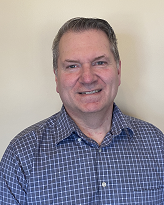 Presenter: Bradley Owen
Sr. Specialist – Asset Health Monitoring, Cameco Corporation - Saskatoon Head Office
Co-presenter:
Jon Hosegood Sr. Technologist Reliability Description:
Cameco Corp. has recently deployed approximately 1,500 wireless asset condition monitoring sensors across four of its operations. This presentation will explore all aspects of this project, from initial identification of business pain, all the way through to deployment and management of the system. Condition-based monitoring of rotating assets typically involves a route that is executed at a fixed interval to collect asset condition data. This data can include vibration, temperature, acoustic emissions, and others. This data is then downloaded into software and analyzed for faults and trends. This method has many shortcomings that can be solved with remote sensing technology. This presentation will take you through Cameco’s journey of identifying the limitations of traditional data collection and why an alternative was investigated. Some of the key topics will include problems and inefficiencies with the current system, methodology used to determine which sensor company to partner with, potential cost savings and benefits, deployment strategy and execution, and some screen captures of actual asset detections. Finally, we will conclude with lessons learned and benefits realized from deploying a sensor solution. About the Presenter:
Brad Owen is a member of the asset management and reliability team in Cameco’s operational excellence group, where he leads the researching, trialling, implementation, and execution of predictive maintenance and asset inspection technologies for Cameco’s Saskatchewan mining and milling operations. Brad joined Cameco in 2006 and has had various roles within the company all related to maintenance engineering and reliability. Previous to his current role with Cameco, he served as a specialist, lubrication and industrial fluids, where he was responsible for implementing and maintaining lubrication programs at Cameco’s operations. Brad holds the following designations: Applied Science Technologist (A.Sc.T.), Maintenance Management Professional (MMP) through PEMAC, and Machine Lubrication Engineer (MLE) through the International Council for Machinery Lubrication  About the Co-presenter: Jon Hosegood is a senior reliability technologist and member of the asset management and reliability team in Cameco’s operational excellence group, where he implements and executes various predictive maintenance and asset inspection technologies at Cameco’s McArthur River mining operation in Northern Saskatchewan. Jon joined Cameco in 2013 and has held various roles within the company, working at Cameco’s McArthur River, Cigar Lake, and Key Lake operations. Jon holds the following professional designations: Applied Science Technologist (A.Sc.T), CAT II Vibration Analyst, and Machinery Lubrication Analyst (MLA1) through the International Council for Machinery Lubrication. He is also in the process of working toward his MMP certification through PEMAC.
|
Digital Transformation, moving beyond Condition Monitoring: Lessons learned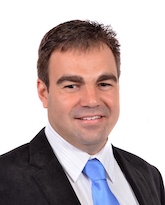 Presenter: Johannes Coetzee
Managing Director, Martec
Description:
Industry is moving away from scheduled periodic maintenance, past condition-based maintenance and towards true predictive maintenance that is data-driven, real-time and risk-based. Developing and refining models that will predict potential failures long before the first possible signs can be measured in terms of traditional condition monitoring.
Superimposing empirical condition monitoring as well as operational data with system knowledge to predict the remaining life of a system based on real-time risk-based modeling. Progressing towards autonomous decision making and maintenance scheduling. Taking human dependent decision making out of the loop.
All in support of improved availability, cost and safety, but also more frequently placing emphasis on the environmental, social and governance impact of maintenance. Striving towards optimising the value contribution by maintenance to the organisation’s triple bottom line.
About the Presenter:
Johannes Coetzee is the MD of Martec (a specialist condition monitoring company) and Chairman of the Global Forum on Maintenance and Asset Management (GFMAM), the umbrella forum for professional associations in the field of maintenance and assets management across the world. He is the past-president of the Southern African Asset Management Association (SAAMA) and also serves on the Advisory Board of the Industrial Engineering Department at the University of Pretoria, South Africa. Johannes is an Industrial Engineer, holds an MBA and has been in the field of maintenance and asset management for more than two decades. |
Maximo Implementation for a Multi-Site Organization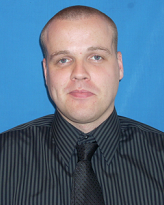 Presenter: Adam Taylor
Business Technology Coordinator, Regional Municipality of Durham
Description:
The Regional Municipality of Durham is a community that makes up the east end of the Greater Toronto Area (GTA), which comprises multiple cities and townships. The region provides a multitude of services to approximately 745,000 residents and maintains $17.85 billion in assets and infrastructure. The region was using several disconnected applications and business processes to manage these services, many of which had limited functionality, reporting, and analytics, as well as a lack of integrations to other systems. In an effort to standardize and streamline these services, the region amalgamated all of the tracking of regional assets, maintenance management, and business technology processes. The region began the process of requirements gathering in 2013; at this time, a steering committee was created to govern the project, and project leads and business subject matter experts were engaged to ensure the product selected met business requirements. In 2015, the region began the procurement process: request for proposal, evaluation, vendor presentation, and negotiations. Maximo was the selected enterprise maintenance management system. Durham used a multi-phased implementation plan—including Planning, Design, Execution, and Closing—which consisted of three go-live dates. This multi-phased approach would span over the course of three years. The initial phase of the project included detailed design, organizational impact analysis, future business process design, future role modifications and development, and multiple-tiered information sessions. The organization identified current operational gaps and business process changes were required. It followed Use Case business processes with some adaptation for operational responsiveness and consistency within the To-Be roles. The business was able to retain current operational practices as much as possible but built in a structured and disciplined approach to maintaining assets. This will influence and impact the quality of analytics and reporting. Through its approach, the region was able to implement a centralized maintenance management system across multiple divisions. This implementation impacted 800 end users across 13 divisions and multiple third-party system integrations. It also performed a readiness assessment of departments, divisions, and areas and organizational, process, and technology criteria. It created a go-live and system support strategy, and monitored system, sustainability, and performance throughout the implementation process. About the Presenter:
Adam Taylor has extensive knowledge in mechanical design, facilities maintenance operations, and asset management. He has experience in specialized projects relating to building automation, enterprise maintenance management systems, and ongoing end user support and product enhancements and development. |
Zero-Based-Budget Approach to Build The Maintenance Organization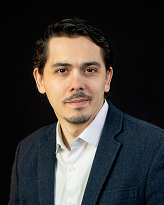 Presenter: Alp Bora
Maintenance Director, ACPE Inc.
Description:
Approche du budget à base zéro pour développer l'organisation de maintenance
Présentateur : Alp Bora Responsable de l'innovation, Alp Bora & Co. Description : Une société minière est en activité depuis plus de 40 ans. Ils souhaitaient comparer leurs opérations et leur maintenance avec la référence du secteur. Après avoir réalisé cette comparaison, nous avons constaté que leurs effectifs étaient supérieurs de 20 % à ceux de leurs concurrents. Par conséquent, ils ont demandé une vérification de leur organisation et souhaitaient appliquer les "meilleures pratiques" en matière de maintenance, y compris au niveau des services de planification. Dans cette présentation, je vais expliquer comment nous avons restructuré les équipes de maintenance de la société minière. Je présenterai également les outils utilisés, les réticences auxquelles nous avons été confrontés et ce que nous avons appris de cette expérience.
English:
A mining company has been operating for more than 40 years. They wanted to compare their operations and maintenance against the benchmark. After completing the benchmark, we realized that their headcount was 20% higher than their competitors. As a result, they asked for a sanity check of their organization and wanted to apply the "best practices" in maintenance, including planning departments. In this presentation, I will explain how we restructured the mining company's maintenance teams. I will also cover what tools were used, what push-back we received, and what we learned from this experience. About the Presenter:
Alp Bora is the Head of Innovation at Alp Bora & Co., an independent think tank and consulting firm providing advisory, speaking, and coaching services in the areas of mining & metals, business strategy, and leadership. The mission is to help mining & metallurgy companies achieve operational excellence and support the mining industry’s transition to a sustainable future. Bora’s expertise includes project management, operational excellence, and asset management. À propos du présentateur : Alp est le responsable de l'innovation chez Alp Bora & Co., un groupe de réflexion indépendant et un cabinet de conseil fournissant des services de conseil, de conférences et de coaching dans les domaines suivants : Mines et métaux, Stratégie d'entreprise et Leadership. Sa mission est d'aider les entreprises minières et métallurgiques à atteindre l'excellence opérationnelle et à soutenir la transition de l'industrie minière vers un avenir durable. Les domaines d'expertise d'Alp comprennent la gestion de projet, l'excellence opérationnelle et la gestion des actifs. |
Illustrating Operational & Maintenance Data for Generation Assets on a Pareto Chart Presenter: Firdaus Timyati
Power Quality Engineer, Manitoba Hydro - Head Office
Description:
If we were to do reliability analysis on certain assets, which assets are worth our effort and provide the greatest impact? To solve this, our team developed a focused methodology to help us identify which asset types need to be further analyzed in the coming years. Our goal is to identify the asset type that causes the highest generation of lost opportunity cost and the highest maintenance costs. Ideally, the generation of lost opportunity cost should be added to maintenance cost. Lost opportunity cost is calculated from existing operational performance data, which is collected and used for NERC GADS (North American Electric Reliability Corporation Generating Availability Data System) reporting. Maintenance cost is calculated from maintenance history in CMMS (Computerized Maintenance Management System). The operational performance and maintenance history data are illustrated using a Pareto chart. As a result, the asset type that causes the highest generation of lost opportunity cost can be identified from the chart. However, asset types with the highest maintenance costs may not indicate the asset type with the most issues. Besides, the NERC GADS codes may be related to one or more assets in CMMS and, therefore, need a relationship to be created if the costs are to be added. About the Presenter:
Firdaus Timyati is a performance analyst at Manitoba Hydro, a provincial Crown corporation that provides electricity and natural gas services to the province. She was born and raised in Malaysia. Firdaus holds a bachelor’s and a master’s degree in Electrical Engineering from Universiti Tun Hussein Onn Malaysia. After moving to Canada, she received a post-baccalaureate diploma in Engineering from the University of Manitoba. She then obtained a professional engineer licence from Engineers Geoscientists Manitoba. Firdaus has a passion for renewable energy and power systems. She has been involved in various reliability engineering projects related to hydroelectric generation and transmission. |
Lessons learned from the introduction of Asset Investment Planning tools in the UK water industry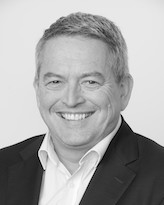 Presenter: Richard Edwards
Executive Director, AMCL USA
Description:
Water companies in the UK are facing unprecedented challenges to meet more demanding stakeholder needs at the same time as demonstrating better value for money for customers. AMCL worked in partnership with one of the largest UK water businesses and a leading technology provider to introduce new Asset Investment Planning capabilities to respond to these challenges. This case study explores the background and specific challenges facing the organization, explores the preparatory work that was undertaken prior to procuring an enterprise tool and presents the benefits that were ultimately delivered. It will explore the lessons learned from this and other case studies in implementing AIP solutions. It will explore how the implementation of an AIP software tool will not by itself deliver a step-change in asset investment planning capability. This requires improvements in the wider organizational aspects involved in investment planning including the business operating model elements, business processes, organizational accountabilities, roles & responsibilities, governance, data quality, behaviours, ways of working and performance. About the Presenter:
Richard is an Executive Director and Board member of AMCL with responsibility for AMCL's North Ameican business and also is the global technical authority for AMCL products and services. |
How to make an AMS - Asset Management System operational and sustainable Presenter: Edmea Adell
Présidente, IFRAMI - Institute Français d'Asset Management pour l'industrie et infrastructure
Description:
It is necessary to understand the contributions of asset management and an asset management system in one organization. And to have tangible results in the implementation of an asset management system, it is necessary to understand how to make it operational, efficient and sustainable. The objective of this presentation is to clarify what must be implemented in one asset management system. More than setting it up, it must be shared and used by all the actors involved in the asset management of the company. About the Presenter:
Edmea ADELL, President of ASSETSMAN, with more than 35 years of professional experience, is specialized in industrial asset management systems. She is the chairman of IFRAMI - French Institute of Asset Management for industry and infrastructure. Since the creation of ASSETSMAN in 2001, she has led the ASSETSMAN team in France and Brazil. She has comprehensive knowledge and expertise in finance, excellent administrative abilities and high-level communication skills. |
Enriching Asset Management: An Interdisciplinary Approach Presenter: Beth Daniel
Asset Management Specialist, City of Waterloo
Description:
Asset management maximizes the value of physical assets while balancing cost, quality (levels of service), and risk. It is a complex and interdisciplinary task that requires strong leadership, multidisciplinary knowledge, and effective use of technology and resources. Asset management is especially challenging for public organizations that own a wide range of assets, such as roads, water, sanitary, stormwater infrastructure, facilities, parks, public art, information technology, and fleet. Furthermore, asset management is not merely a technical or a leadership role but a marrying of the whole organization. Hence, asset managers must have a holistic understanding of how their assets support the organization’s long-term goals and how to engage with various stakeholders. The presentation will explore skills, techniques and methodologies to help asset managers achieve better outcomes and meet their objectives. The approaches range from traditional methods to the latest techniques in industry and elsewhere. These include engineering, finance, project management, maintenance management, supply chain, process improvement, public engagement, design thinking, and journalism. About the Presenter:
Beth Daniel is a professional engineer with over 15 years of experience in the Canadian energy sector in diverse engineering, asset integrity, project management, business planning, operations, maintenance, digital system implementation, and team leadership. For the past three years, she has focused on the public and community sectors serving and contributing to Waterloo Region communities. She currently works for the City of Waterloo as an asset management specialist. Beth holds a B.Sc. in Chemical Engineering and has been a PEMAC member since 2020. |
The Third Line of Assurance (Confidence in the Management of Assets)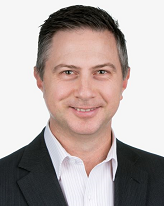 Presenter: Toby Horstead
Technical Executive Strategic Asset Management, WSP Australia
Description:
You are an asset owner. What confidence should you have that those operating and maintaining your assets are capable and “doing a good job”? With organizations more and more commonly outsourcing their maintenance and operations, and even the management of assets, there must be assurance activities in place, assurance to provide confidence that third parties will deliver what is asked and that their approach is sustainable in the long term. A three-lines-of-assurance approach provides asset owners, operators, and maintainers with layers of audit to assess the effectiveness of risk and control functions. The third line assessment is aligned to the audit and risk function and is for executive or board committees. This presentation will explore case studies where an organization may have benefited or has benefited from third line assurance. The three lines of assurance can be characterized as follows: First Line—how operational managers own and manage their asset risk and maintain effective internal controls; Second Line—how management establishes compliance functions that facilitate and monitor operational practices; and Third Line—expected to provide executive management, audit and risk committees, and governing boards with a means of addressing their responsibilities and accountabilities for meeting their corporate objectives or regulatory requirements. The third line is expected to provide high-level independent assurance on organizational effectiveness. Assurance is a fundamental of asset management; it should provide confidence that assets will fulfil their required purpose. It is hypothesized that, as an industry, we would do well to focus on assurance (giving and receiving) and, more importantly, capability building. Public asset owners in particular should be investing in their organizational capability, and industry should be focused on providing enduring uplift in knowledge and management system improvement. Asset owners cannot separate themselves from their assets and the realization of organizational outcomes. Independent review and advice at the third line should provide the assurance required to give confidence that those operating and maintaining your assets are capable and are “doing a good job.” About the Presenter:
As a strategic asset management lead and technical executive in the advisory team at WSP, Toby Horstead brings more than 24 years of experience working with asset owners to develop strategic solutions to asset management challenges and opportunities. He is an outcome- and service-focused asset manager, developing and documenting asset management assurance frameworks, asset management plans, asset information, and future asset strategies across the rail industry and government agencies. Toby is the national chair of the Board of the Asset Management Council and actively volunteers to promote and improve asset management as a profession. Toby is a Certified Practitioner in Asset Management and Certified Asset Management Assessor (CAMA). Toby is also a Fellow and Engineering Executive of Engineers Australia, as well as a Chartered Professional Engineer in Leadership and Management and Asset Management. Toby’s career was initially focused on the NSW Railways and Transport for NSW before moving into advisory roles. Toby now includes the Sydney Opera House, the Art Gallery of NSW, NSW Fire and Rescue, Infrastructure NSW, and the Department of Health Victoria as clients he has supported. |
Implementing RCM at Simcoe Muskoka Catholic District School Board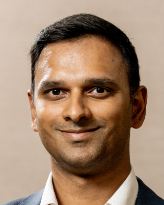 Presenter: Nigel D'Souza
Manager of Facilities Services, Simcoe Muskoka Catholic District School Board
Description:
Within the asset management and maintenance management scope, school boards are predominantly responsible for facilities and associated infrastructure. It’s critical to ensure spaces are available and safe for continued program delivery, while supporting unique legislative and political requirements. The Simcoe Muskoka Catholic District School Board (SMCDSB) Facilities Services Department consists of a small centralized team supplemented by various contractors and consultants. The SMCDSB has been transitioning from informal practices to structured processes over the last four years and recently undertook an initiative to implement Reliability Centred Maintenance (RCM) through a pilot project on a critical heating system at a secondary school. Tasked with a large geographical service area and a complex portfolio, the SMCDSB Facilities Services team determined it was necessary to explore opportunities to improve reliability while mitigating risk and optimizing resourcing. Leveraging knowledge from PEMAC’s MMP Module 5 set the foundation for establishing the business case for an RCM pilot project for a critical heating system for a secondary school. The project began in March 2023 and is on schedule for completion and implementation in June 2023. This presentation will outline the process of program development for RCM implementation for buy-in, establishing the plan for the initiative, the process that was developed, and the outcomes. We will share the journey, lessons learned, and how success is being measured. About the Presenter:
Nigel D’Souza—P.Eng.—has a career spanning private and public sector operations and corporate leadership. Nigel led program development and operation of the asset and maintenance management program for Ontario’s provincial Crown water utility (the largest water and wastewater operator in Canada). Currently, he is the manager of facilities services for the Simcoe Muskoka Catholic District School Board. With more than a decade of leading asset and maintenance management practices, Nigel continues to raise awareness and recognition of this field and continues to serve on the PEMAC Board of Directors. |
Breaking Down the Silos Between Maintenance and Operations with Daily KPIs and Achievement Survey (French) Démanteler les silos entre la maintenance et les opérations avec des KPI quotidiens et des enquêtes sur les réalisations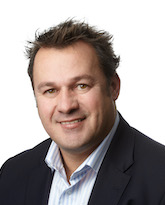 Presenter: Michel Fournier
Président - CEO, COGEP Inc.
Description:
Briser les barrières entre la maintenance et les opérations grâce aux indicateurs clés de performance quotidiens et aux enquêtes de satisfaction Ces dernières années, les entreprises sont confrontées au défi d'améliorer leur efficacité tout en maintenant des relations harmonieuses avec leurs employés grâce à une structure de communication efficace. Les stratégies de production sont de plus en plus axées sur le "juste-à-temps", ce qui met l'accent sur l'importance d'avoir les bonnes stratégies de maintenance et une bonne gestion des priorités. Pour y parvenir, nous constatons que les entreprises mettent en œuvre des stratégies de gestion LEAN pour s'assurer qu'elles travaillent sur les bonnes priorités en tant qu'équipe. Mais est-ce que votre GMAO est configurée pour gérer ces exigences de production ? Vos processus de gestion des urgences répondent-ils aux attentes de tous ? Votre processus d'investigation des pannes est-il suffisamment robuste pour éviter que les pannes ne se reproduisent ? Votre GMAO peut vous aider à communiquer des informations de manière à prendre les meilleures décisions pour votre entreprise. Nous savons également que la relation entre la maintenance et les opérations est cruciale pour la réussite de l'entreprise, mais elle n'est pas toujours mise au premier plan. Saviez-vous qu'il est possible d'utiliser votre GMAO pour réaliser des enquêtes pendant les tâches de maintenance et mesurer le niveau de satisfaction des opérations, puis mettre en place un plan d'amélioration sur les points nécessaires ? Nous vous montrerons comment obtenir ce type d'informations.
In recent years, companies have been challenged to improve their efficiency while maintaining a harmonious working relationship with their employees supported by an effective communication structure. The production strategies are more and more in “just in time” mode, which puts an importance on having the right maintenance strategies and good priorities management. To do so, we observe LEAN management strategies being implemented in companies to ensure they’re working on the right priorities as a team. But is your CMMS configured to manage these production requirements? Do your emergency management processes meet everyone’s expectations? Is your failure investigation process sufficiently robust to ensure failures do not recur? Your CMMS can help you communicate information in a way that allows you to make the best decisions for your business. We also know that the relationship between operations and maintenance is crucial to the success of the company but is not always put at the first level of importance. Did you know that it’s possible to use your CMMS to make surveys during maintenance tasks and measure the level of satisfaction of operations and then implement an improvement plan on the necessary points? We will show you how to get this type of information. About the Presenter:
Bachelier en Administration des Affaires et en Informatique, il possède plus de 36 ans d’expérience dans le développement de logiciel GMAO. With a Bachelor's degree in Business Administration and Computer Science, he brings over 36 years of experience in GMAO software development. He co-founded Cogep in 1989 and has been the CEO since 2007. Under his leadership, the company's revenue has quadrupled, and it now serves clients in over 20 countries. He is deeply involved in the company's operations and the continuous evolution of the Guide Ti software. He actively participates in various corporate management committees for the deployment of maintenance best practices and the implementation of performance indicators. |
Leveraging Social Media in Asset Management: Real-Life Case Studies and Strategies for Success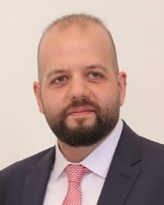 Presenter: Paul Saghbini
Learning & Development, PEMAC Asset Management Association of Canada
Description:
Exploiter les médias sociaux dans la gestion des actifs : études de cas réelles et stratégies de réussite
La croissance rapide et l'adoption généralisée des médias sociaux ont transformé la manière dont les entreprises et les organisations communiquent, collaborent et partagent des informations. Cette présentation, intitulée "Exploiter les médias sociaux dans la gestion des actifs : études de cas réelles et stratégies de réussite", explore le rôle des médias sociaux dans la gestion des actifs et démontre comment ils peuvent être utilisés pour combler les lacunes de communication, renforcer l'engagement des parties prenantes et améliorer les processus de prise de décision. Conçue pour les participants de l'événement Maintrain organisé par PEMAC, cette présentation s'appuiera sur des études de cas réelles du domaine de la gestion des actifs pour illustrer les applications pratiques et les avantages des médias sociaux dans différents scénarios. Ces études de cas mettront en évidence les façons innovantes dont les organisations ont utilisé des plateformes telles que LinkedIn, Twitter et Facebook pour partager des mises à jour, recueillir des informations et interagir avec les parties prenantes. En analysant des études de cas telles que l'utilisation des médias sociaux par la ville de Toronto lors de projets d'infrastructure (https://www.toronto.ca/city-government/data-research-maps/city-data-strategy/) et la communication proactive de Duke Energy pendant les pannes de courant (https://illumination.duke-energy.com/articles/how-duke-energy-uses-social-media-to-keep-customers-informed-during-outages), les participants apprendront comment adapter ces stratégies à leur propre contexte de gestion des actifs. Les principaux enseignements de cette présentation comprendront la compréhension du potentiel des médias sociaux en tant qu'outil pour les professionnels de la gestion des actifs, l'identification des meilleures plateformes et stratégies pour différents objectifs, et la mise en œuvre de meilleures pratiques pour garantir une participation réussie. Les
participants quitteront la présentation équipés d'informations concrètes, de ressources et de techniques pour intégrer les médias sociaux dans leurs pratiques de gestion des actifs afin d'obtenir de meilleurs résultats et de satisfaire les parties prenantes. Plan de la présentation : I. Introduction A. Le rôle croissant des médias sociaux dans la communication d'entreprise B. Applications potentielles et avantages des médias sociaux dans la gestion des actifs II. Étude de cas 1 : Projets d'infrastructure de la ville de Toronto et médias sociaux A. Aperçu et contexte 1. Lien : https://www.toronto.ca/city-government/data-research-maps/city-data-strategy/ B. Résultats d'apprentissage 1. Renforcement de l'engagement du public et de la transparence 2. Facilitation des mises à jour et des commentaires en temps opportun C. Principales conclusions 1. La valeur des médias sociaux pour la communication avec les parties prenantes 2. Adaptation du contenu et du message aux différentes plateformes III. Étude de cas 2 : Communication de Duke Energy sur les médias sociaux pendant les pannes de courant A. Aperçu et contexte 1. Lien : https://illumination.duke-energy.com/articles/how-duke-energy-uses-social-media-to-keep-customers-informed-during-outages B. Résultats d'apprentissage 1. Fourniture de mises à jour en temps réel et de soutien 2. Construction de la confiance et de la réputation de la marque C. Principales conclusions 1. L'importance de la réactivité et de l'empathie 2. Exploitation des médias sociaux pour la gestion de crise IV. Points clés et relation avec la gestion des actifs A. Identification des plateformes les plus adaptées aux objectifs spécifiques B. Développement et mise en œuvre de stratégies de médias sociaux pour la gestion des actifs C. Interaction avec les parties prenantes et collecte d'informations précieuses D. Garantie de la confidentialité et de la sécurité des données V. Exemples A. Organisations de gestion des actifs utilisant efficacement les médias sociaux 1. Exemple 1 : Compte Twitter d'American Water pour l'engagement des clients a. Lien : https://twitter.com/amwater 2. Exemple 2 : Présence LinkedIn d'Assetivity pour le partage d'informations sectorielles a. Lien : https://www.linkedin.com/company/assetivity/ VI. Conclusion A. Récapitulation des études de cas, des résultats d'apprentissage et des principales conclusions B. L'impact potentiel des médias sociaux sur les pratiques de gestion des actifs C. Encouragement à explorer et à intégrer les médias sociaux dans les stratégies de gestion des actifs pour améliorer l'engagement et la communication avec les parties prenantes
The rapid growth and widespread adoption of social media have transformed the way businesses and organizations communicate, collaborate, and share information. This presentation, titled "Leveraging Social Media in Asset Management: Real-Life Case Studies and Strategies for Success," explores the role of social media in asset management and demonstrates how it can be used to fill communication gaps, enhance stakeholder engagement, and improve decision-making processes.
Designed for attendees of the Maintrain Event organized by PEMAC, this presentation will draw on real-life case studies from the asset management field to illustrate the practical applications and benefits of social media in various scenarios. These case studies will highlight the innovative ways organizations have utilized platforms such as LinkedIn, Twitter, and Facebook to share updates, gather insights, and engage with stakeholders.
By analyzing case studies such as the City of Toronto's use of social media during infrastructure projects (https://www.toronto.ca/city-government/data-research-maps/city-data-strategy/) and Duke Energy's proactive communication during power outages (https://illumination.duke-energy.com/articles/how-duke-energy-uses-social-media-to-keep-customers-informed-during-outages), attendees will learn how to adapt these strategies to their unique asset management contexts.
Key takeaways from this presentation will include understanding the potential of social media as a tool for asset management professionals, identifying the best platforms and strategies for different purposes, and implementing best practices to ensure successful engagement. Attendees will leave the presentation equipped with actionable insights, resources, and techniques for integrating social media into their asset management practices to drive better results and stakeholder satisfaction.
Presentation Outline:
I. Introduction
A. The growing role of social media in business communication
B. Potential applications and benefits of social media in asset management
II. Case Study 1: City of Toronto's Infrastructure Projects and Social Media
A. Overview and context
1. Link: https://www.toronto.ca/city-government/data-research-maps/city-data-strategy/
B. Learning outcomes
1. Enhancing public engagement and transparency
2. Facilitating timely updates and feedback
C. Key takeaways
1. The value of social media for stakeholder communication
2. Adapting content and messaging for different platforms
III. Case Study 2: Duke Energy's Social Media Communication during Power Outages
A. Overview and context
1. Link: https://illumination.duke-energy.com/articles/how-duke-energy-uses-social-media-to-keep-customers-informed-during-outages
B. Learning outcomes
1. Providing real-time updates and support
2. Building trust and brand reputation
C. Key takeaways
1. The importance of responsiveness and empathy
2. Leveraging social media for crisis management
IV. Main Focus Points and Relating to Asset Management
A. Identifying the most suitable platforms for specific goals
B. Developing and implementing social media strategies for asset management
C. Engaging with stakeholders and gathering valuable insights
D. Ensuring data privacy and security
V. Examples
A. Asset management organizations using social media effectively
1. Example 1: American Water's Twitter account for customer engagement
a. Link: https://twitter.com/amwater
2. Example 2: Assetivity's LinkedIn presence for sharing industry insights
a. Link: https://www.linkedin.com/company/assetivity/
VI. Conclusion
A. Recap of case studies, learning outcomes, and key takeaways
B. The potential impact of social media on asset management practices
C. Encouragement to explore and integrate social media into asset management strategies for better stakeholder engagement and communication
About the Presenter:
Over ten years’ experience in university instruction, communication strategy, and media relations, with a strong aptitude for content creation, technical writing, media liaison, and communication consultancy. A proficient business communication specialist, holding an extensive background in learning & development consulting, instructional design, blended learning, and LMS content development with demonstrated expertise in communication training, workshop design, project management, consultancy, implementation, and evaluation. |
Professional Development Pathways through PEMAC and the WPiAM Global Certification Scheme Presenter: Susan Lubell
Principal Consultant, Steppe Consulting Inc.
Co-presenter:
John Hardwick Past Chair AM Council Description:
In this session, we will look at the professional development pathways available from institutions and educational bodies from around the world. Special guest Dave Daines will look in detail at the professional development pathways the WPiAM can offer individuals and organizations, both now and in the future, through the GCS. Susan Lubell will discuss PEMAC’s approach to certifications, how they align to the GCS, and the many benefits to our PEMAC members as individuals and the organizations that employ them of hiring certified asset management, maintenance, and reliability professionals. Specific content will focus on MMP, CAMP, CSAM, CPAM, CTAM, and CAMA, as well as career development, transportability, transferability, and rigorous process for evaluation. About the Presenter:
Susan Lubell—P.Eng., MBA, MMP, CAMA—has extensive experience in the fields of asset management, reliability, maintenance management, and operational excellence. She brings over 25 years of progressive experience leading teams through their improvement journeys, connecting organizational business goals and objectives with practical actions implemented at the front line to drive business results. The author of Root Cause Analysis Made Simple, Susan has had a variety of industry roles, including director and past-president of PEMAC, chair of the PEMAC Competency Committee, and chair of World Partners in Asset Management (WPiAM). Her current role is on the Steering Committee for the Global Forum on Maintenance & Asset Management (GFMAM) Landscape revision. |
Case Study: Extending the Life of Critical Process Pipework at the City of Winnipeg North End Sewage Treatment Plant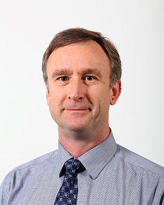 Presenter: Jason Smith
Senior Mechanical Engineer, KGS Group
Co-presenter:
Andrew Fustey Mechanical Engineer-In-Training Description:
The City of Winnipeg faced challenges with the condition of their Return Activated Sludge (RAS) piping within the North End Sewage Treatment Plant. Non-destructive and destructive condition assessment techniques were used to determine that the critical process piping was life expired, and required replacement or rehabilitation to maintain process level of service until the plant is upgraded. Replacement of a RAS piping system is akin to major heart surgery on a sewage treatment plant. To manage the process risk, in situ structural renewal using an engineered Carbon Fibre Reinforced Polymer (CFRP) external wrap system to encapsulate the original carbon steel piping was chosen. Selection of the rehabilitation method reduced the schedule by two years compared to the replacement option and minimized operational risk, as process outages were reduced to a few short-term events. Offline testing of mock-ups and emphasis on environmental and quality control further managed the risks associated with CFRP installation. The project faced unique challenges due to the complex configuration of the RAS piping, which was located inside a congested plant gallery with surrounding equipment, piping, and electrical services in continuous operation. To effectively convey information during planning, design, tender, and construction, a digital 3D model was developed using laser scanning to capture the detailed configuration of the piping and surrounding physical constraints. The 3D model was embedded with data to define the rehabilitation scope, locations of existing pipe leaks requiring immediate repair, rework of pipe supports to accommodate the CFRP installation, and other aspects relevant to the work. This model was a highly effective tool used for collaborative review by all project team members throughout design and construction, leading to successful completion of the RAS piping rehabilitation. About the Presenter:
Jason Smith is a senior mechanical engineer at KGS Group specializing in design of process mechanical systems in industrial facilities and municipal water/wastewater treatment plants. His experience includes inspection and performance/condition assessment of plant mechanical and piping systems for process and utility applications. Jason has 25 years of experience at KGS Group providing consulting engineering services to clients in industrial processing/manufacturing, power/utility, and municipal water/wastewater sectors. He has also worked as an engineer within the operations and maintenance divisions of pharmaceutical and mining processing facilities.  About the Co-presenter: Andrew Fustey is a Mechanical Engineer-In-Training at KGS Group who assisted in the design and resident engineering services for the North End Sewage Treatment Plant Return Activated Sludge (RAS) project. Andrew was responsible for the creation of an interactive digital 3D model, which was used by the client and contractor through the design, tendering, and construction phases of the project. During construction, Andrew and the KGS Group team used the model extensively for various tasks, including planning shutdowns, avoiding interferences and hazards, and documenting unknown site conditions. The model was a key tool that helped deliver a successful rehabilitation project.
|
The Decommission Boom - A Path to Carbon Neutrality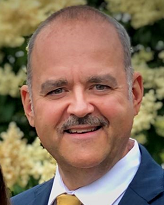 Presenter: Rick Derkach
Asset Management, Agnico Eagle Canada - Detour Lake Mine
Description:
Asset decommissioning is a large and fast-growing business. However the full comprehension of the program terms for both cost and the complexity of this execution phase in an assets lifecycle is regularly misunderstood. This presentation will discuss the ways to find the right model for asset decommissioning.
As the world moves quickly on the path to carbon neutrality, replacing our aging assets with a clean-energy option is a critical step towards the reduction of large (GHG) greenhouse gas producing assets. As a part of our enterprise mission throughout the world in all industrial sectors, the immediate "turn on the switch" to carbon neutral will be met with increasing challenges of supply and demand and our new race to the green planet.
Now, seen as a corporate responsibility rather than a burden, our mission bears greater challenges than just reducing carbon, and poses another layer of complexity when deciding what, when and how to decommission while balancing significant capital investments to remain sustainable.
If our current practices for our assets life-cycle; from design through to operational phase are without standardization, we then introduce greater technical challenges, economic cost and psycho-social challenges that affect our workforce retention during the end of the assets life.
While we collectively align to combat our climate crisis, we also enter deeper into a "Throwaway" Society. World-wide decommissioning has become a "hot topic" as we see many assets reaching their end of life, while at the same time climate change takes center stage.
As the increased public eye adds another layer of scrutiny over asset decommissioning, we need to create an efficient and effective program that will accept "green" decommissioning, supporting a circular economy through recycling and waste reduction, while looking towards ways to reuse existing assets for renewable energy transformation. About the Presenter:
I am a demonstrated and consummate professional with 26 years, firsthand experience in physical asset management through operational and reliability excellence. It is my pursuit as an agent of change in the landscape of operations, maintenance and reliability to couple best practices while aligning the strengths and diversity of the employees to achieve success. Such cooperation and synergy have resulted in enhancement of strategies to support autonomy, mastery and purpose in the context of asset management frameworks and continual improvement. I have been fortunate to engage in managing assets starting my journey as a journeyman industrial mechanic and apprentice industrial electrician, which further supported my growth and development of skillsets to become a craftsman at my trade, while expanding my knowledge to maintenance planning, supervision, and management in senior roles within a number of industries, such as manufacturing, pulp & paper, engineered lumber products, mining, oil & gas, and marine transportation. I have also had the opportunity to engage as principal consultant in reliability for mining, oil & gas and green energy solutions within Canada, United States and Australia. I am currently employed with Agnico Eagle Mining Ltd., with the Asset Management group as part of the Nunavut service groups supporting our 3 mining operations in the Nunavut region. |
Using Risks In The Operating Context To Define Stakeholder Value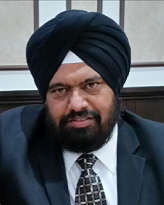 Presenter: Iqbal Biln
Manager, Corporate Technical Programs, St. Lawrence Seaway Management Corp.
Description:
As an organization, we have been doing asset management for many years and have adopted many good industry practices, but we know we have to evolve and continuously improve. We have set ourselves a mandate to align with ISO 55001 through an Asset Management Eco-System. As part of formalizing its asset management system, the St. Lawrence Seaway Management Corp. (SLSMC) developed an Asset Management Value Framework with significant internal and external stakeholder engagement to define value. The process has allowed SLSMC to identify internal and external risk factors key to the sustainable seaway service delivery. In this presentation you’ll discover how we went about defining stakeholder value from Seaway Assets by exploring the drivers of value, the associated risks, and their impact on Seaway services in the present operating context. About the Presenter:
Iqbal Singh Biln is the Corporate Manager for Technical Programs at the St. Lawrence Seaway Management Corp. He is an engineering professional with 30 years of multidisciplinary experience in asset management, engineering, infrastructure management, maintenance, and operations in the mining and marine industries. He has managed large multi-scale projects, including preparation of business cases, investment justification, budget management, risk analysis, equipment selection, procurement, and construction management. Biln has also developed and implemented infrastructure inspection and assessment programs, preventative maintenance programs, business plans, and long-term asset renewal programs. As a Six Sigma Champion, Biln is committed to excellence through continuous improvement. He holds a B.Eng. and an MBA, and is a registered professional engineer in Ontario. He also is a Certified Asset Management Assessor and a Certified Maintenance Management Professional. |
Systems Thinking Approach and 7 Golden Rules to Deliver a First-Rate Reliability Plan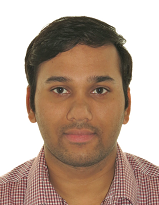 Presenter: Sathishkumar Nachimuthu
Reliability Manager, Weyerhaeuser Company Limited - Drayton Valley Sawmill
Description:
Reliability and maintenance teams in all manufacturing plants have a common goal; that is, to plan and execute initiatives that will help sustain the inherent reliability of the physical assets and increase the availability of the plant. Productivity and profitability of the manufacturing plant and overall organization are highly dependent on the reliability and availability of the plant. A thorough understanding of the importance of reliability has made the top management of major corporations invest in reliability and physical asset management. When the top management invests in reliability, they typically set the corporate strategy and directions for reliability through a road map for all the manufacturing plants that operate under the corporation. When the commitment or support from the top management is available for reliability initiatives, the onus is now on the individual manufacturing plant to develop a reliability plan that aligns with the corporate strategy and/or reliability road map and the current needs of the plant. The reliability and maintenance teams typically build all the strategic, tactical, and operational reliability plans that have initiatives that would make the biggest impact on continuous improvement in reliability and bring the desired benefits for the site. This presentation will explain the systems thinking approach, along with the seven golden rules and seven key factors, that will help reliability and maintenance teams to build an effective reliability plan. In addition, this presentation will also address the top three challenges in building a reliability plan and how to overcome those challenges through two case studies. The first case study is about developing a three-year reliability plan, and the second case study is about developing an annual reliability plan. Both the case studies will explain the application of the systems thinking approach, seven golden rules, seven key factors, and top three challenges that were dealt with and solved. About the Presenter:
Sathishkumar Nachimuthu is a young, diligent, and industrious team player who always loves to work in a challenging work environment, with a positive attitude. Sathishkumar is currently working as a reliability manager at Weyerhaeuser, Drayton Valley Sawmill, and leading all the reliability initiatives at the sawmill to establish and sustain an effective, optimal, and comprehensive reliability and maintenance program. Sathishkumar obtained a Bachelor of Engineering in Mechanical Engineering in India and an M.Sc. in Engineering Management at the University of Alberta, Canada. Sathishkumar worked as a “research assistant” at the Reliability Research Lab at the University of Alberta, under the supervision of Dr. Ming Zuo, who is a global leader in physical asset management, reliability, and maintenance research. Sathishkumar developed prime knowledge in physical asset management, reliability, and maintenance through his time at the Reliability Research Lab,. Sathishkumar worked with Dr. Ming Zuo and has published his research work in reliability and maintenance areas in highly reputed journals and conferences. Sathishkumar gained expertise in ISO 55000, asset management strategy, methods, and models, through his asset management summer school in Zhejiang University, China. Sathishkumar worked with the asset management department of EPCOR Utilities Inc. (Electricity Operations and Water Treatment Plant) on multiple reliability and asset management roles and then joined West Fraser as a reliability specialist. Sathishkumar successfully led multiple reliability improvement initiatives and projects in West Fraser Hinton Pulp and produced impactful results in mill reliability and availability. Sathishkumar holds multiple professional credentials; namely, the Certified Maintenance and Reliability Professional (CMRP), Certified Reliability Leader (CRL), and IAM Certification in Asset Management. |
How to Manage Anomaly Data and Create Analytics for Asset Management - Case Study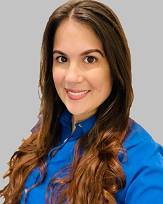 Presenter: Angela Saldivar
AIM & RBI Specialist, Antea Canada Inc
Description:
A goal of any asset management program is to prevent equipment failure and downtime. A powerful component toward achieving this objective lies in asset data analytics: applying analytics to data from the assets and using the resultant insights to inform educated, cost-effective, and efficient maintenance protocols. One highly effective way to do this is by tracking anomalies. Inspections make up only a portion of what needs to be done to move to predictive maintenance. From there, the completed inspections should be broken apart where each finding (anomaly) should be tracked separately. This helps not only to determine the schedule for mitigation, but also to determine the nature and cause of the issues. Asset management systems make it possible to track anomalies and manage asset lifecycles more effectively, thereby helping companies keep track of fixed assets and create reliability programs that are operating with compliance excellence. This presentation will examine a case study conducted by a petrochemical operator on the techniques for gleaning intelligent analytics from asset data; how to translate those analytics into smart maintenance planning; and the resulting benefits and metrics they experienced. Join this presentation to learn about the power of data analytics; hear real-world examples of how they can be utilized for predictive maintenance planning; and discover how to contribute that knowledge for enhanced reliability at your own facilities. About the Presenter:
Angela Saldivar is an AIM and RBI specialist with over 10 years’ industry experience helping owner/operators achieve excellence in compliance and reliability. She has worked with several inspection and engineering companies such as Mistras, Team Industrial, and Equity Engineering, and is currently the AIM/RBI Specialist for Antea. Saldivar has also worked as an owner/user with Mitsubishi Chemical America as an asset integrity specialist. |
Using Ontology to Refine and Unify Asset Information and Solve Your Most Intractable Data Problems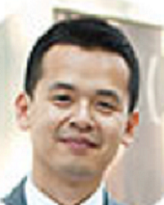 Presenter: Tony Huang
Engineer, City of Toronto - Metro Hall
Co-presenter:
Megan Katsumi Dr. Description:
Information ontologies have been used to integrate information and clarifying the meaning of its contents in the biomedical domain for decades. More recently, the approach is seeing wider adoption in the financial services and industrial domain. In this presentation, we address three familiar problems commonly observed in all industrial sectors. The first is the undesirable state of having multiple sets of information about the same assets stored in independent silos. There are many popular solutions to this problem; we contend that they are fragile due to a second problem. The second problem is that asset records in different data sources (e.g., an engineering drawing repository, work management system, or SCADA database) representing the same asset are updated independently. This leads to inconsistencies between the data sources over time. The third problem is the most critical and perhaps the most intractable – the contents in the data contain pernicious ambiguities. As a result, we cannot find in the data the clear and definitive answers to guide asset management decisions. Ontologies, and their utility for disambiguation and semantic integration, are well suited to support these challenges of asset record management. We present an ontology for asset information integration currently being trialed at Toronto Water for the audience to assess. About the Presenter:
Tony Huang is a senior engineer at Toronto Water. He specializes in the reliability of electrical equipment and, more recently, data and information management foundations for asset management.  About the Co-presenter: Dr. Megan Katsumi is a research associate at the University of Toronto.
|
Improving Asset Information Management: a ‘No-Brainer’ For Reducing Value Leakage. Presenter: Nam Pham
AIM Solutions Delivery Lead, ReVisionz
Description:
According to GFMAM Landscape, the performance of asset-intensive organizations is dependent on the quality and availability of asset data and information. So why does research indicate that 70% of plant operators report 33% to 50% of their asset and process safety information is either missing, incomplete, inconsistent, or outdated? Common complaints from maintenance planners, reliability engineers, facility engineering, process safety and compliance managers include the following: “We can’t find it,” “It’s not complete,” and “We don’t trust it.” As a result, personnel continually make safety, engineering, financial, capital, maintenance, and operational decisions without full access to complete, consistent, and up-to-date information. Such decisions are suboptimal and can cause significant loss. We call this value leakage. Have you ever wondered how much value leakage is costing your organization? Why do the underlying causes of value leakage persist, and what can you do about it? In this presentation, we examine the root causes of value leakage—from incomplete project information handover, to a lack of standards and processes. We then explore a successful framework to improve AIM, including building the business case and return on investment (ROI). Attendees of this presentation will learn how to identify value leakage and the underlying causes; how to calculate the ROI (qualitative and quantitative) of improving asset information management to reduce value leakage; and quick wins and long-term strategies for improving asset information management. About the Presenter:
Nam Pham is an asset information management solutions delivery lead with over 15 years of experience working in both the technology/IT and business sides of mega upstream oil & gas projects. His previous roles include digital twin lead at ExxonMobil, and solutions architect and IT manager for a major EPC where he architected and deployed engineering design tool and asset information management solutions. Nam has contributed to, and applied, key industry standards such as FL3DMS and CFIHOS within large organizations. He currently represents ReVisionz on CFIHOS. |
Leveraging Asset Master Data for Canadian Municipalities: Survey Results of Current State and Potential Improvements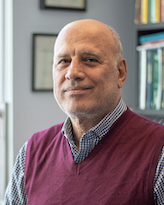 Presenter: Said Easa
Professor, Department of Civil Engineering, Toronto Metropolitan University
Co-presenter:
Rob Lash Supervisor, Corporate Asset Management Description:
PEMAC, FMC, Toronto Metropolitan University, and municipal experts across Canada have partnered on a project entitled “Leveraging Municipal Asset Master Data and Information for Maintenance and Reliability Readiness.” In this project, a survey of Canadian municipalities has been conducted to determine how asset data and information are collected, when, and how it is set up in various systems across the asset’s lifecycle stages. This presentation will highlight the survey results and make recommendations for potential improvements specifically related to setting up maintenance and reliability for success. Many municipalities have been struggling with such improvement areas for years to set up processes, procedures, and systems.
The survey results will help attendees understand the current Canadian landscape and allow making recommendations to improve how and when municipalities best manage their various processes and systems towards improving asset and maintenance management across municipalities. The survey results will help develop and deliver a training course for municipal practitioners in the summer and fall of 2023. The information gathered will also aid in developing a white paper and business case that will increase the profile, understanding, benefits, and requirements for asset master data and information readiness during an asset’s acquisition phase prior to being handed over to the operations and maintenance phase. About the Presenter:
Dr. Said Easa is currently a professor of Civil Engineering at Toronto Metropolitan University in Toronto. He received a Ph.D. in Transportation Engineering from the University of California, Berkeley, U.S. He has served as Chair of the Department of Civil Engineering, Ryerson University, and Director of Quality Assurance for the Faculty of Engineering and Architectural Science. In 2012, Dr. Easa was selected by the Chinese central government as a global expert in the Thousand Talent Program. He is a Fellow of the Canadian Academy of Engineering, Engineering Institute of Canada, the Canadian Society for Civil Engineering (CSCE), and the International Association of Advanced Materials (IAAM). His research interests cover broad transportation areas, including planning, design, operation, and management. In particular, he has introduced innovative approaches for safer and more efficient transportation infrastructure and has identified ways for improving the design of highway alignments, railway crossings, interchanges, intersections, and roundabouts. In addition, he has conducted multidisciplinary research in such areas as intelligent transportation systems, highway construction, road drainage, and geomatics engineering. He has published more than 420 journal articles and 61 book chapters, edited books, and national magazine articles, and 220 conference papers, presentations, and reports. He was editor of a bestselling book, Urban Planning and Development Applications of GIS, published by the American Society of Civil Engineers (ASCE). He serves as associate editor of the Journal of Transportation Engineering, Journal of Surveying Engineering, and Canadian Journal of Civil Engineering.  |


